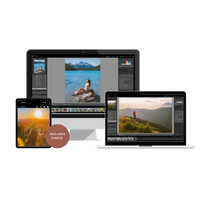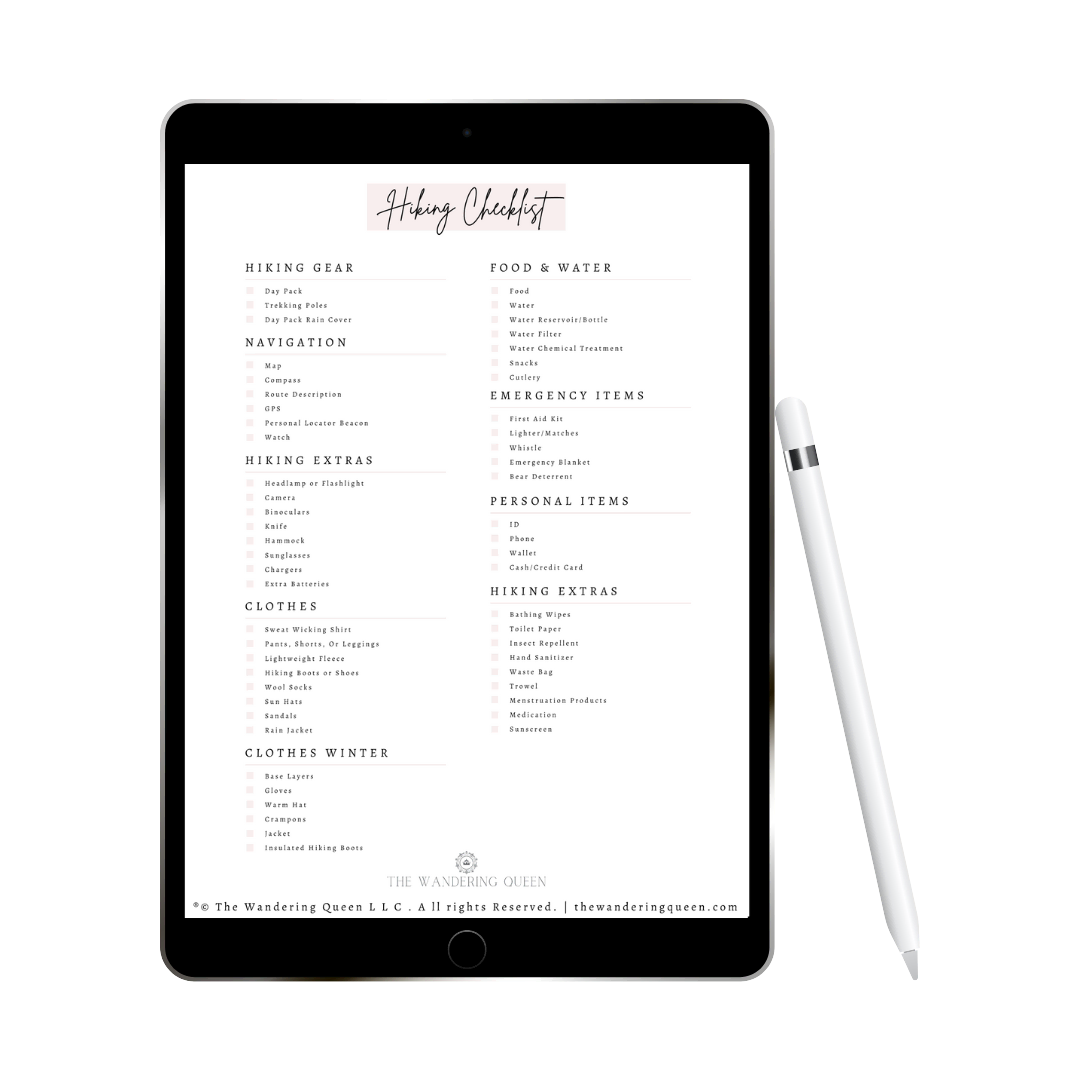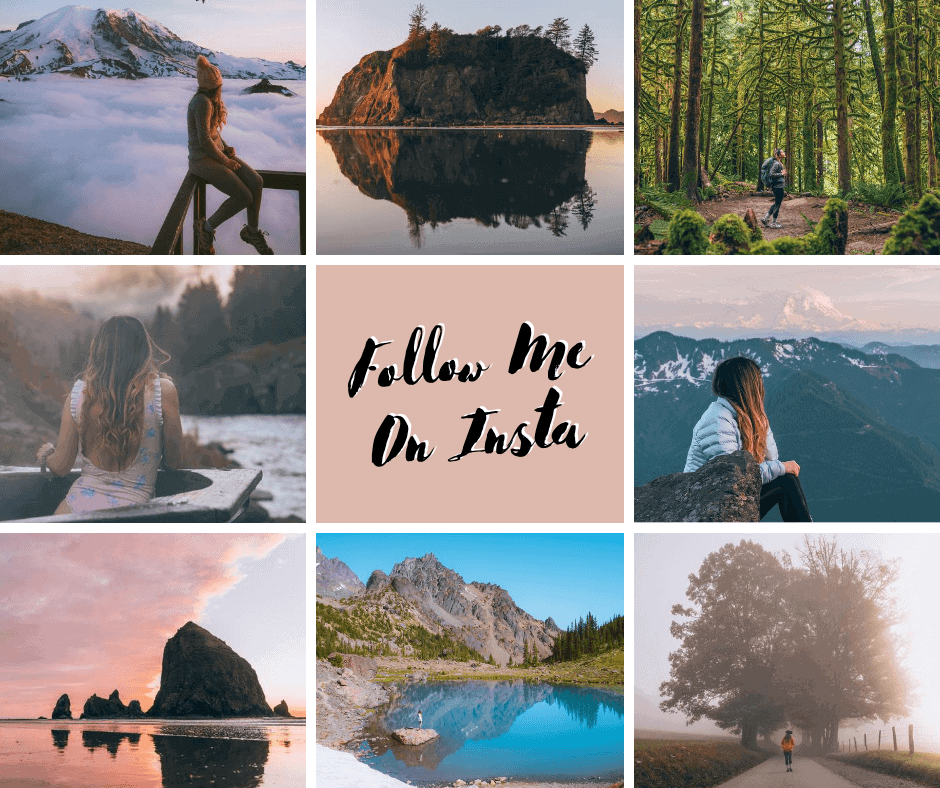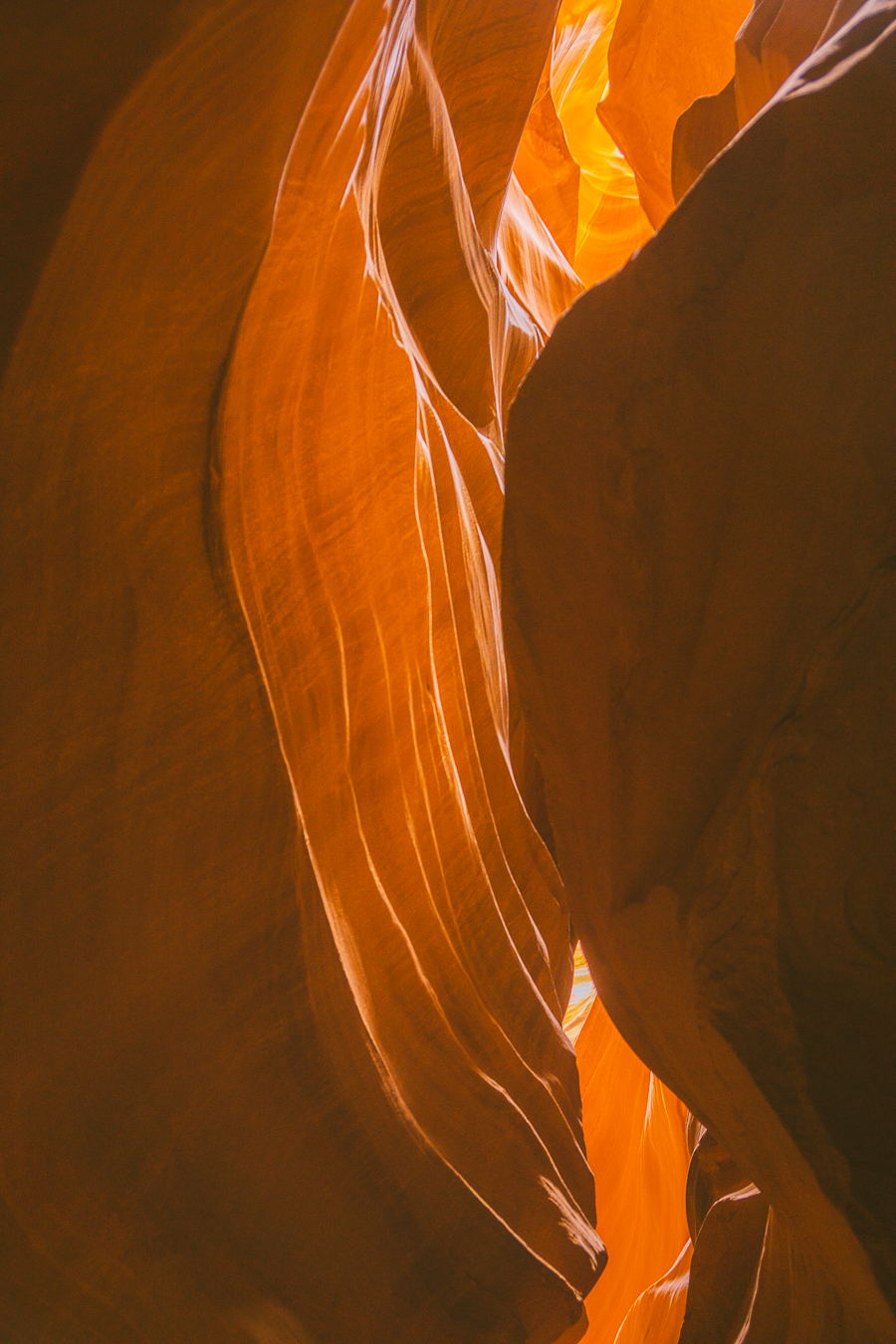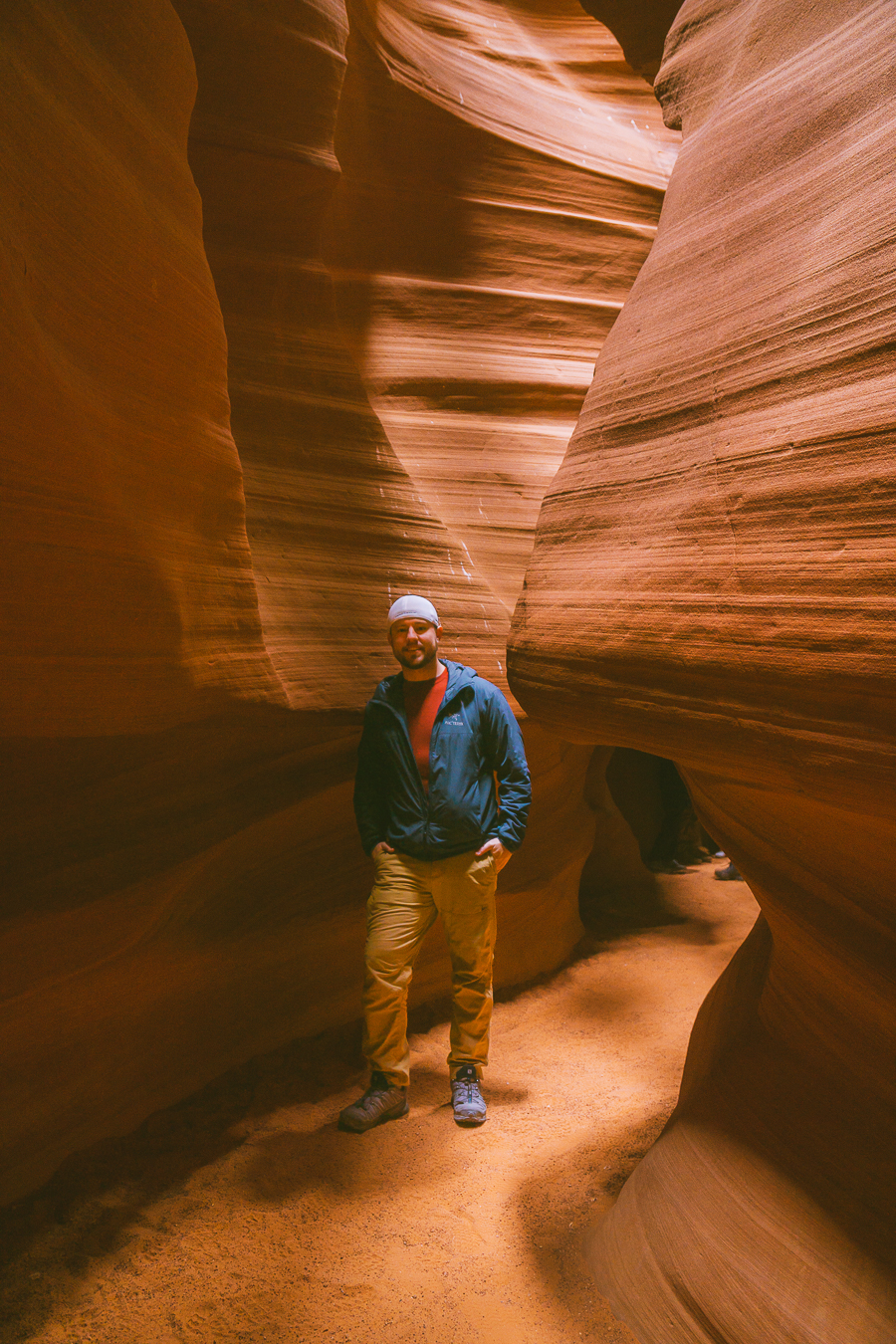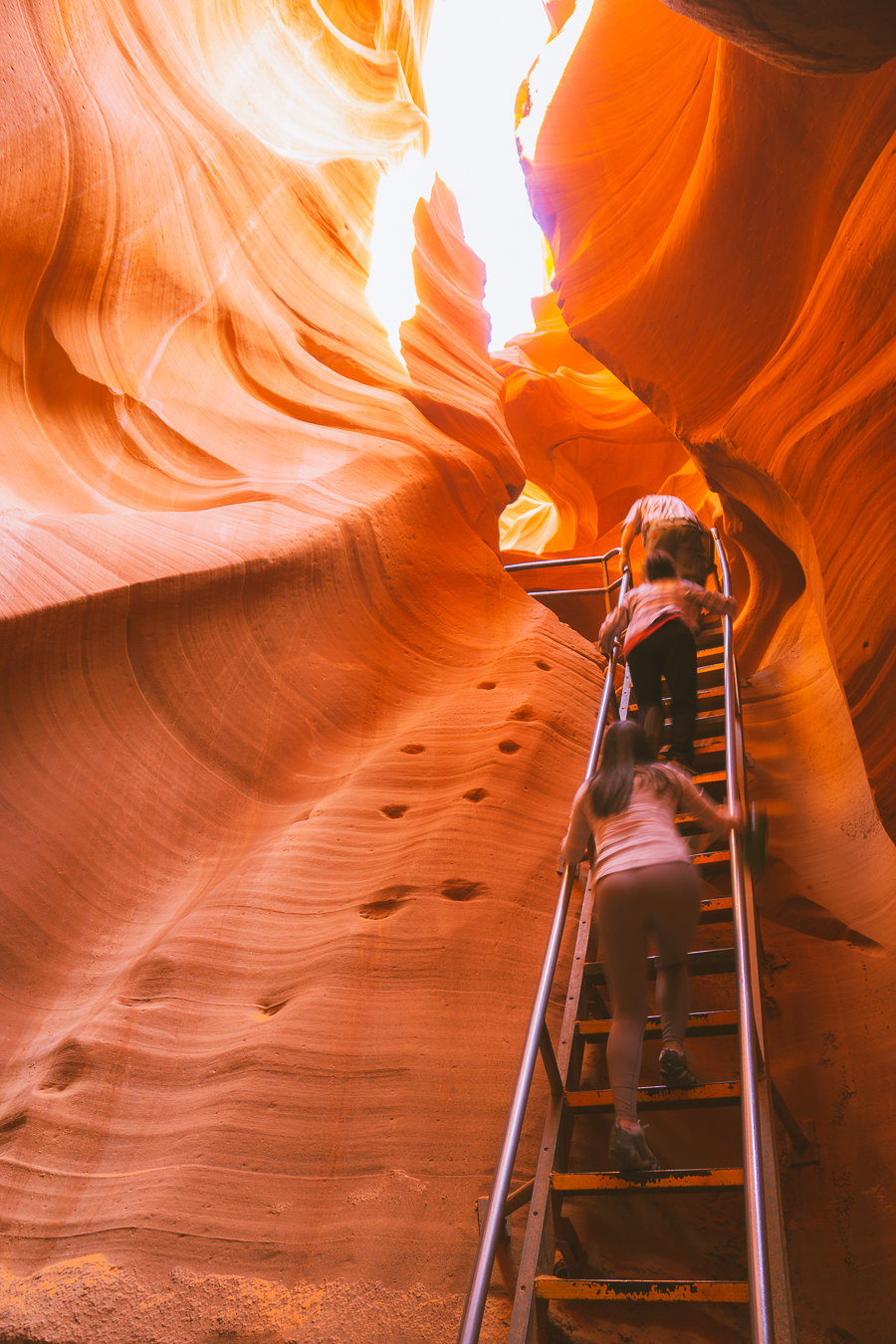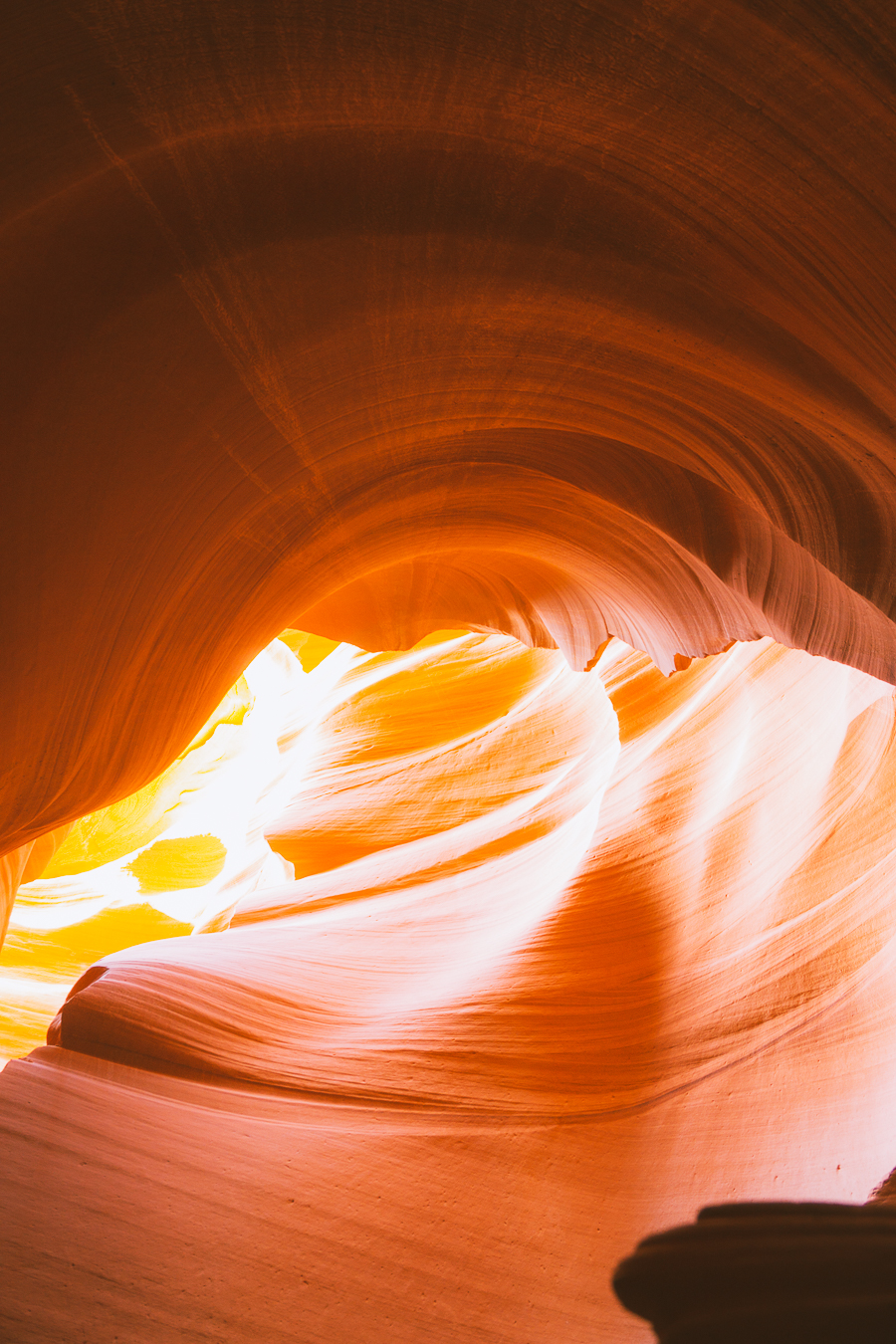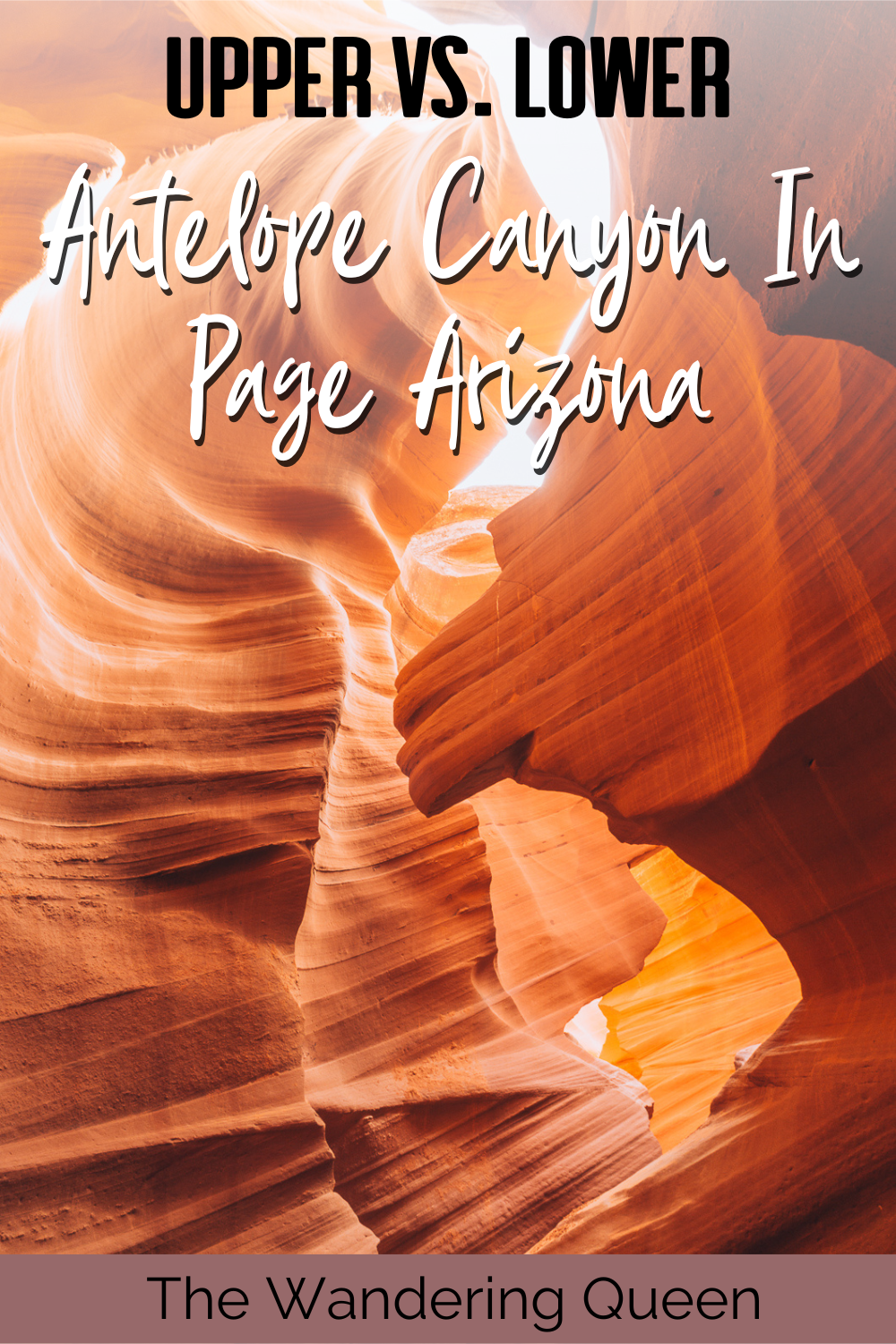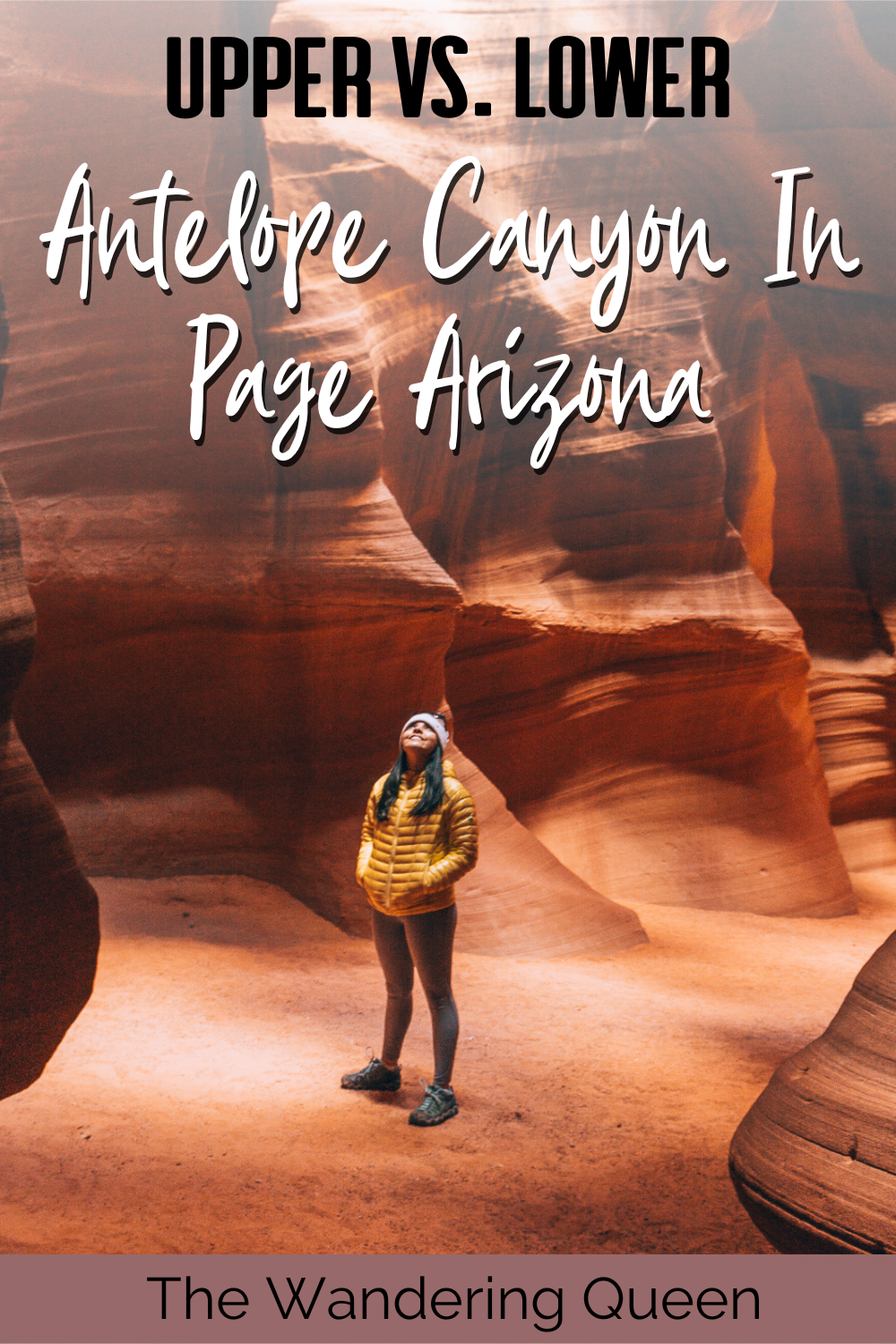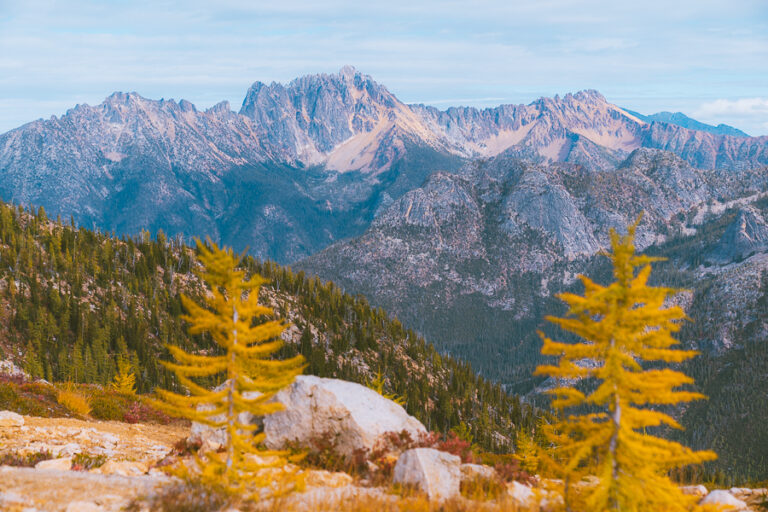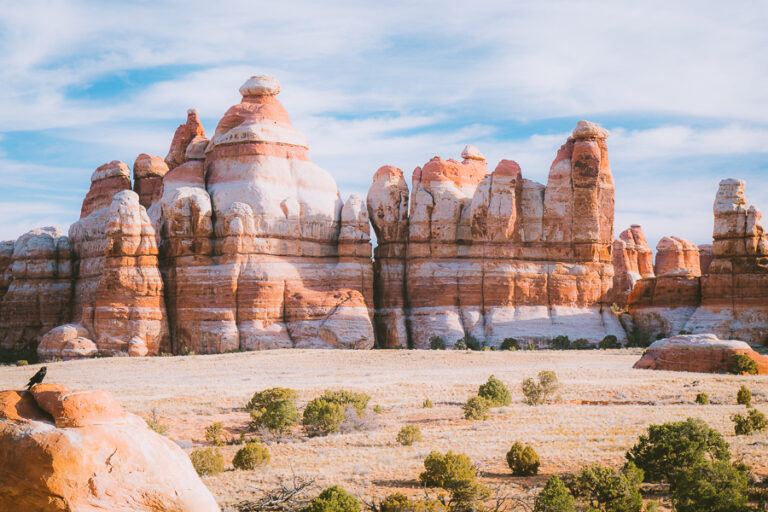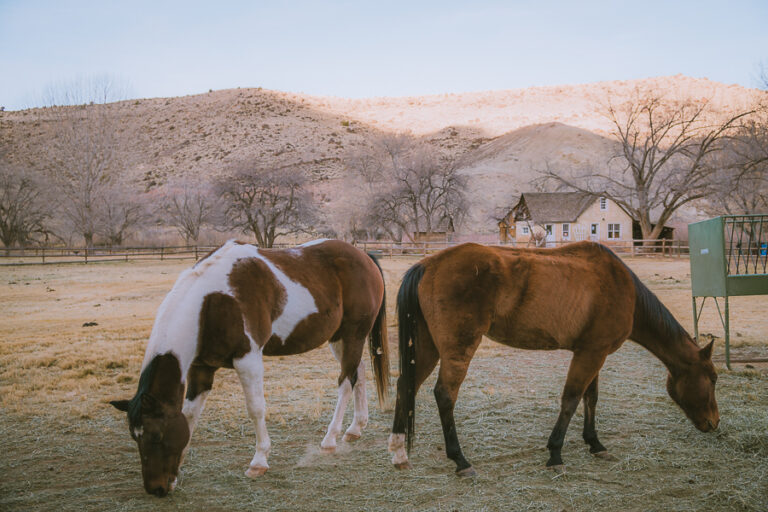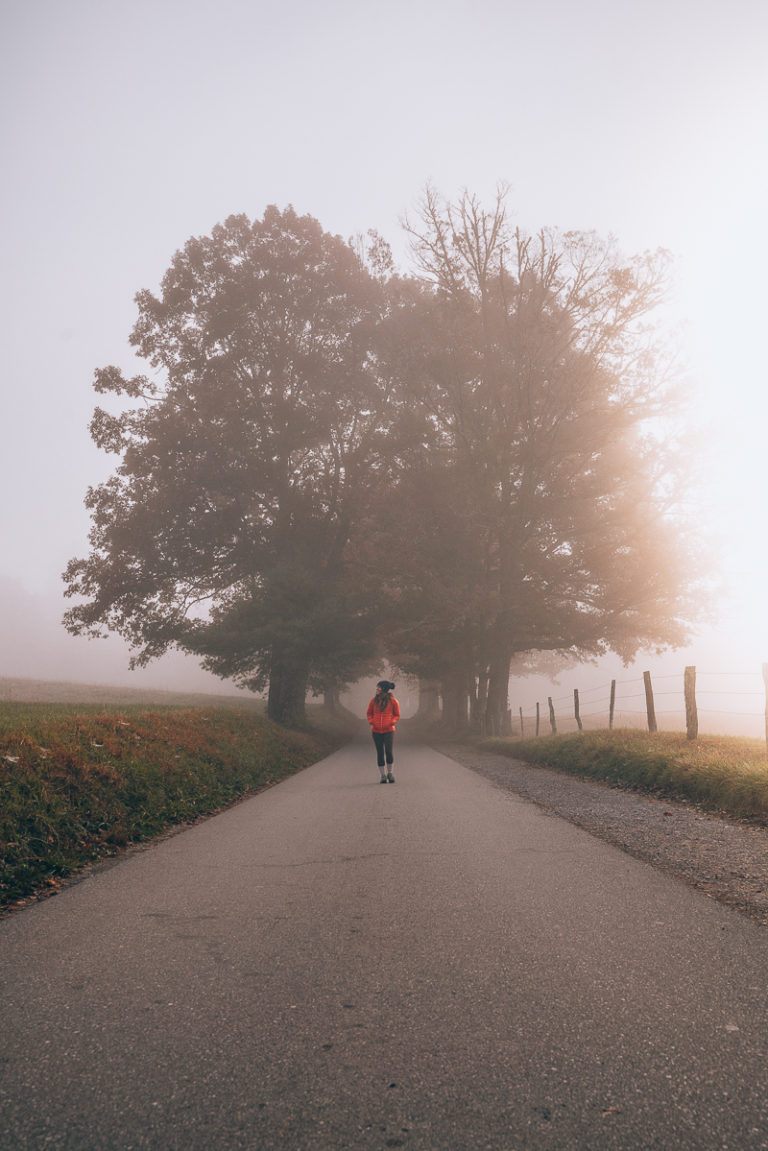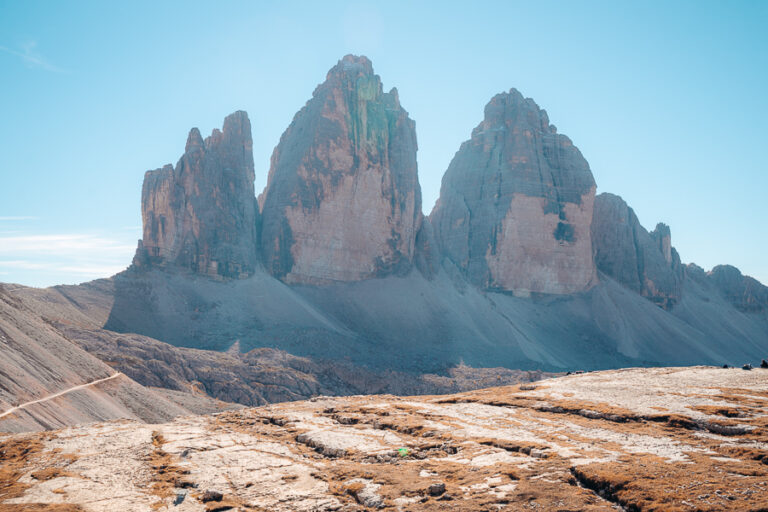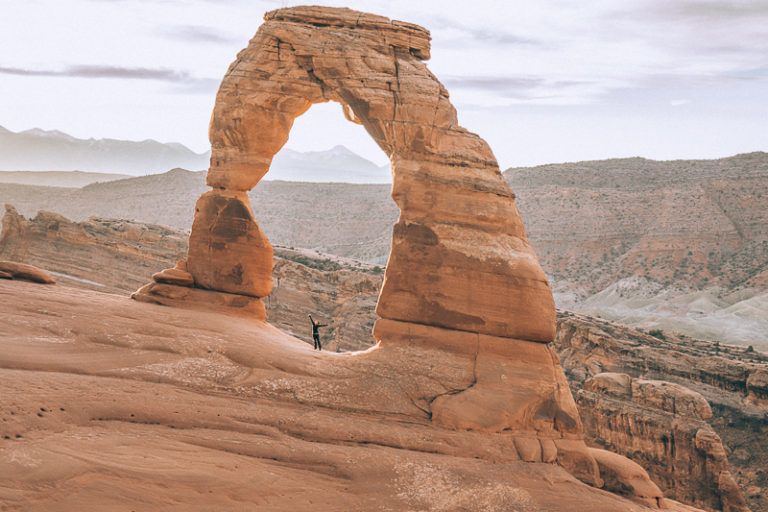Upper vs Lower Antelope Canyon, AZ | Which Is Better to Visit?
If you’re heading to Page in Arizona, you’ve probably got Antelope Canyon near the top of your itinerary. But, when it comes to upper vs lower Antelope Canyon, which one should you choose to visit?
Both parts of the Antelope Canyon are a dream to behold. With its swirling orange sandstone walls eroded by time and the elements, this slot canyon feels otherworldly.
But, there are a few key differences between upper and lower Antelope Canyon that might influence your decision. This guide covers everything from the crowds and photo ops to the prices and accessibility. So gather your best hiking camera gear, and let’s get exploring!
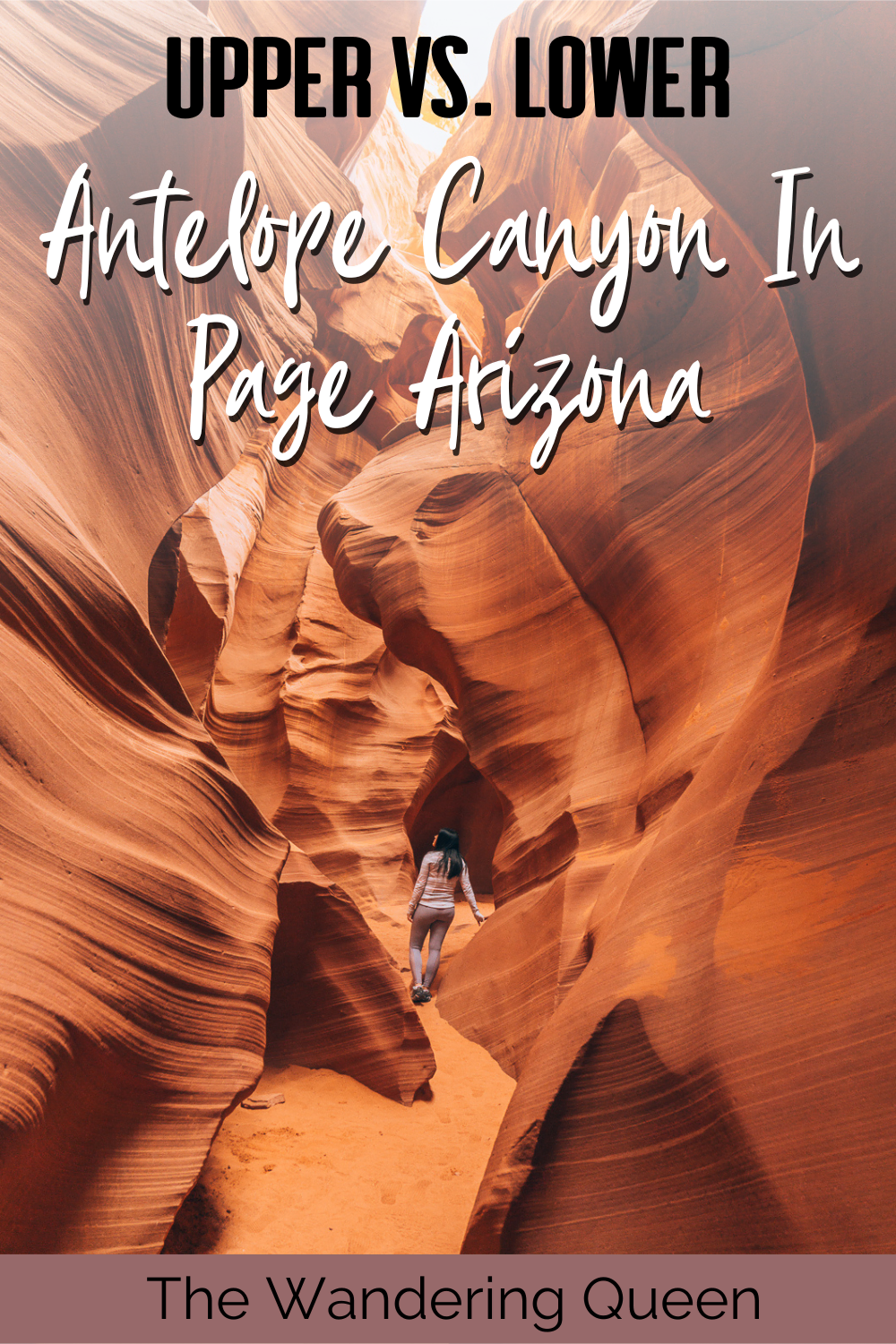
Disclosure: This post contains affiliate links. If you click one of them, I may receive a small commission (for which I am very grateful for) at no extra cost to you.
Good to Know Before You Go
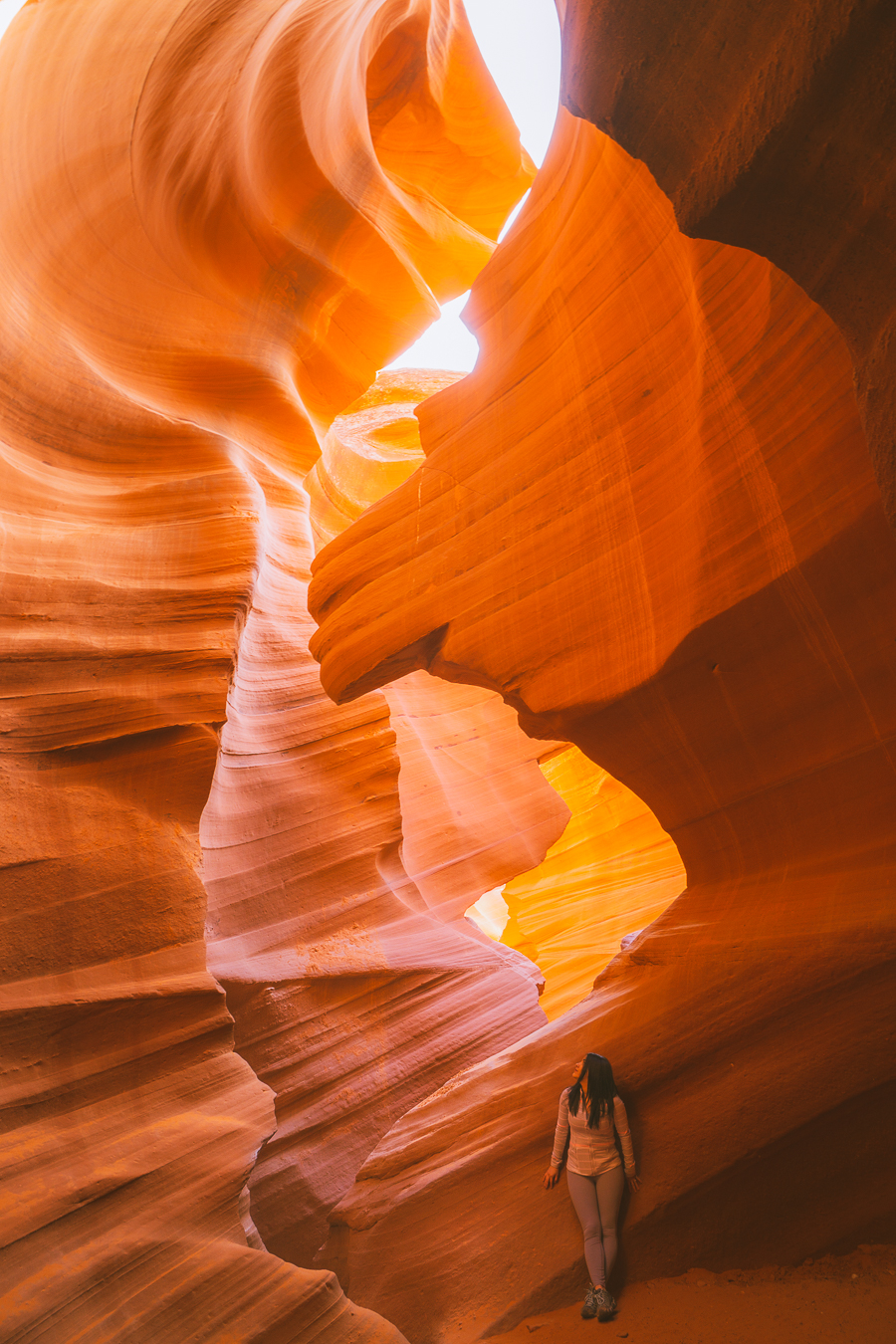
Antelope Canyon is protected by Navajo National Parks and Recreation. You can only enter the canyon accompanied by a Navajo tour guide, so you won’t be able to explore the canyon on your own.
Along with your tour ticket, you’ll have to pay an $8 Navajo Tribal Park entrance fee, which is valid for the entire day of your visit. If you opt to visit both canyons, you can keep your receipt to avoid paying the fee twice.
As always, be respectful of the land and its natural beauty, and remember to practice the seven principles of “leave no trace.”
How to Get to Upper or Lower Antelope Canyon
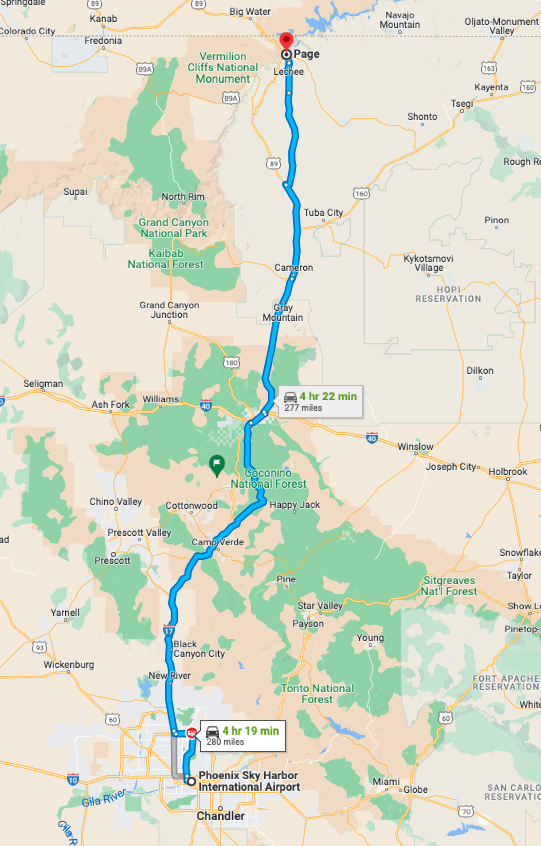
Both Upper and Lower Antelope Canyon sit about 10–15 minutes (or five miles) outside of Page, Arizona. It is situated in the LeChee Chapter of the Navajo Nation near the Utah border. So it’s an excellent option for a fun detour from Zion National Park or Bryce Canyon.
If you’re flying into Arizona, Phoenix Sky Harbor International Airport is the nearest airport. Your 5-hour drive to Page will take you past Flagstaff and Sedona, Arizona.
Alternatively, Page is a great destination for a weekend trip from Las Vegas. The drive is about four and a half hours and passes by the Grand Canyon South Rim. If you want to travel in style, you can book a guided tour from Las Vegas to enjoy the luxury of organized transport.
Where to Stay Near Upper and Lower Antelope Canyon
The town nearest to Antelope Canyon is Page. All other major towns are around two or more hours away. Although this town is small, there are plenty of activities in Page, Arizona, that’ll keep you busy. Here are a few great places to stay at:
Best Western View of Lake Powell Hotel | Budget
Offering spectacular views and reflecting the beautiful orange hues of the nearby rock formations, this Lake Powell Best Western Hotel is the perfect budget option. And it’s a mere 10-minute drive away.
You’ll get to enjoy access to an on-site gym, spacious rooms, and breathtaking vistas from the terrace pool. This hotel is also happy to help you organize bike tours, canoeing, and horse-riding trips.
La Quinta Inn & Suites | Mid-Range
La Quinta Inn is about a 10-minute drive from Antelope Canyon and sits near other top attractions like Lake Powell and Horseshoe Bend. The elegant and modern inn provides everything from an on-site gym to laundry facilities, a pool, and a hot tub.
Rooms are decorated with crisp white lines and pops of blue and yellow. Start your morning off with a complimentary continental or buffet breakfast before heading out to enjoy the nearby attractions.
Hyatt Place | Luxury
While it may look quite average from the outside, Hyatt Place has all the luxuries for the ultimate visit to Page. This hotel offers the perfect balance between comfort and elegance, with floor-to-ceiling windows, warm-hued brick walls, and spacious but minimalist rooms.
Keep up with your fitness goals in the on-site fitness center, cool off in the pool, or enjoy classic American cuisine at the on-site restaurant.
Claim your FREE Hiking Checklist
Ready to start hiking? Grab my free hiking checklist and never forget anything at home!
Antelope Canyon: Upper vs. Lower
When it comes to visiting Upper or Lower Antelope Canyon, you’re probably wondering whether you should visit both or just one location. And if you’re only seeing one, which one should you choose?
The breakdown below delves into the key differences between the two, so you can make the right decision for your needs.
Upper Antelope Canyon
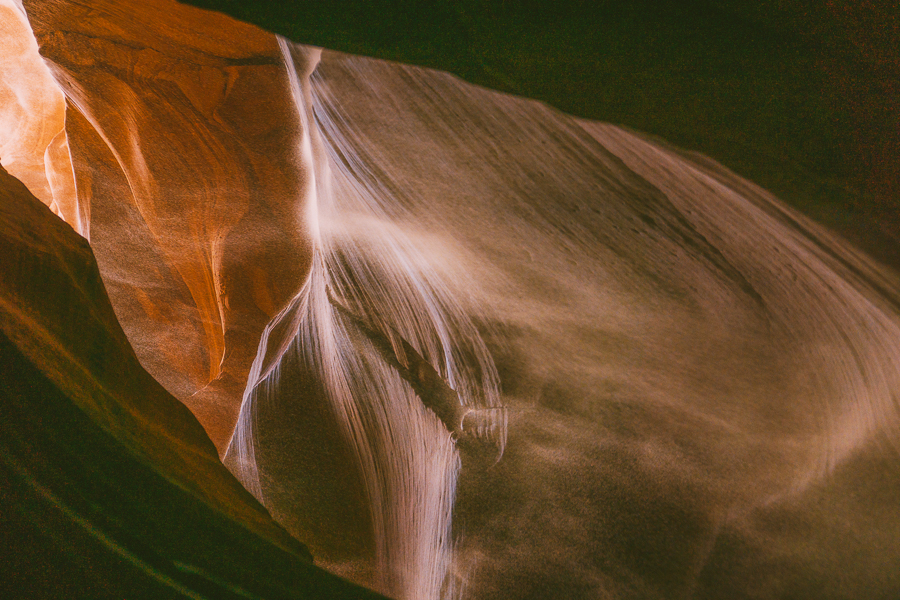
Upper Antelope Canyon is by far the most popular of the two. The roughly 600-foot-long slot canyon welcomes up to 10,000 people a day during peak season—so you can imagine it can get crowded.
This canyon is renowned for the breathtaking shafts of light that break through the narrow canyon roof. In fact, Peter Lik’s mesmerizing “The Ghost” photograph, taken in Upper Antelope Canyon, sold for $6.5 million.
This is also likely the canyon that adorned your Windows computer screen in the 2000s and could be spotted in every second National Geographic magazine. The dramatic light shafts and depth of the canyon make it rightfully famous.
But, thanks to its popularity, you can expect a few positives and a couple of drawbacks.
Difficulty
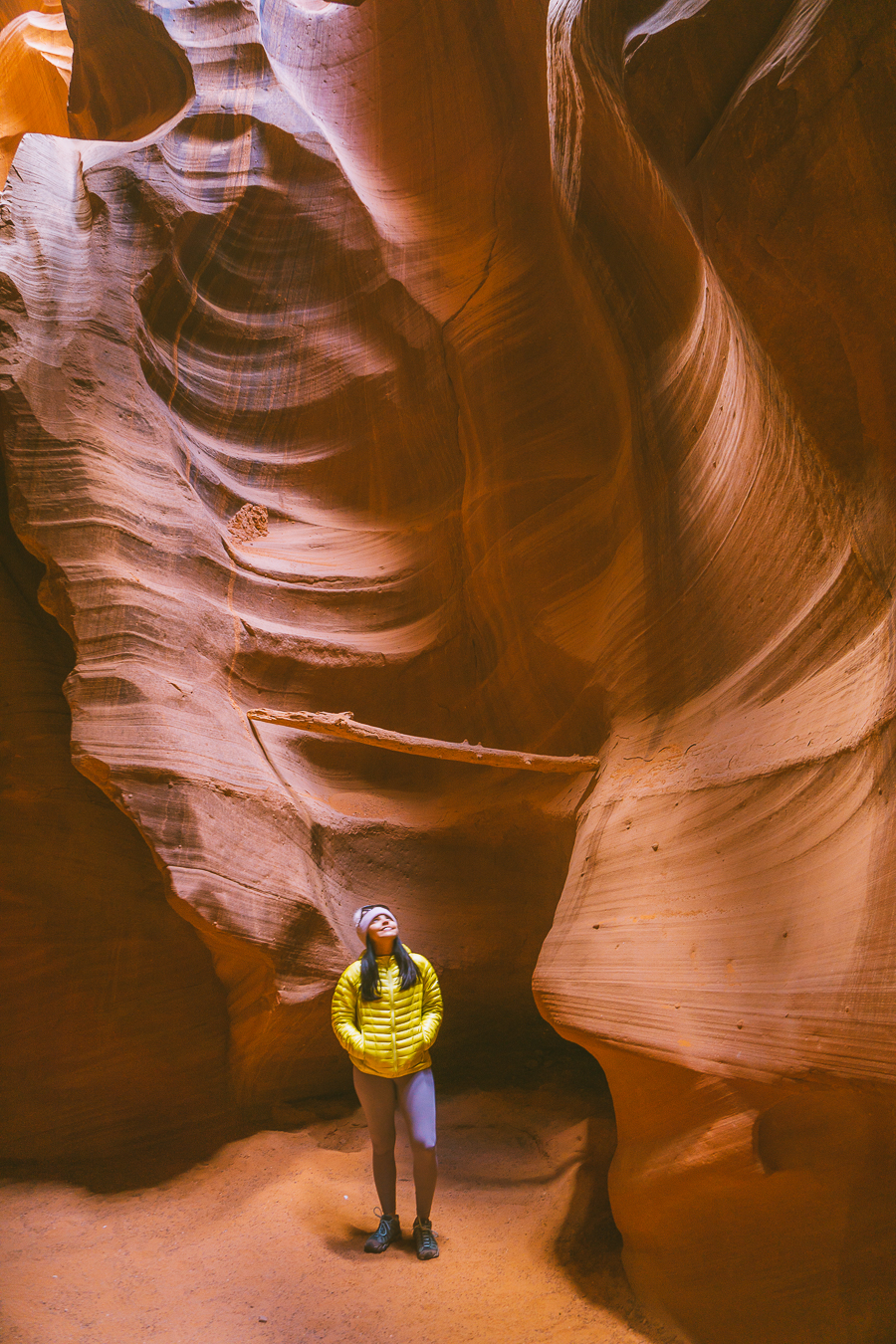
One of the great things about Upper Antelope Canyon is that it’s super accessible and easy to walk through, as the surface is flat. The 0.5-mile stretch starts and remains at ground level, so you won’t have to climb any ladders or steps to get through.
The canyon also has more of an “A-shape,” where the canyon is narrower at the top and broader at the base. This means you won’t be squeezing through tight spots to explore its crevices.
A drawback to this may be that it’s not the most adventurous option. The tour through feels more like a walk than a hike—which is great if you’re still looking to wear beautiful sundresses or have mobility issues.
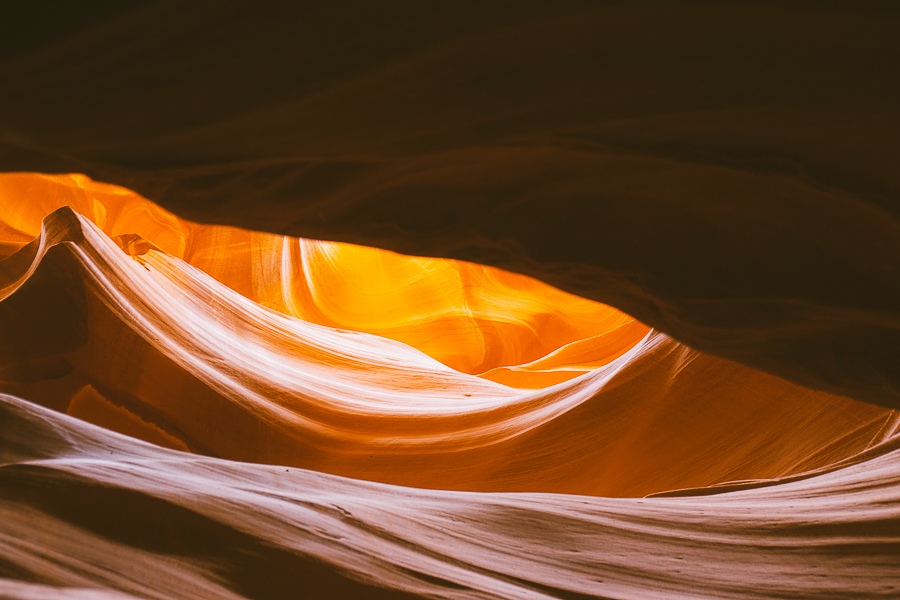
However, new changes have been implemented to improve the flow of the canyon. Before, you would have had to walk the same path back through the canyon (into oncoming groups). Now, you have to exit on the other end of the canyon and walk back over it, following a set of staircases.
The walk back to the parking lot and entrance can take about 20–30 minutes, has an elevation change of 200 feet, and there’s no shade. The staircases make the walk back much easier, and you’ll get to enjoy some scenery. However, this does make the tour limiting for people in wheelchairs.
Download my free Outdoor Photography Guide
Upper Antelope Canyon Tours and Prices
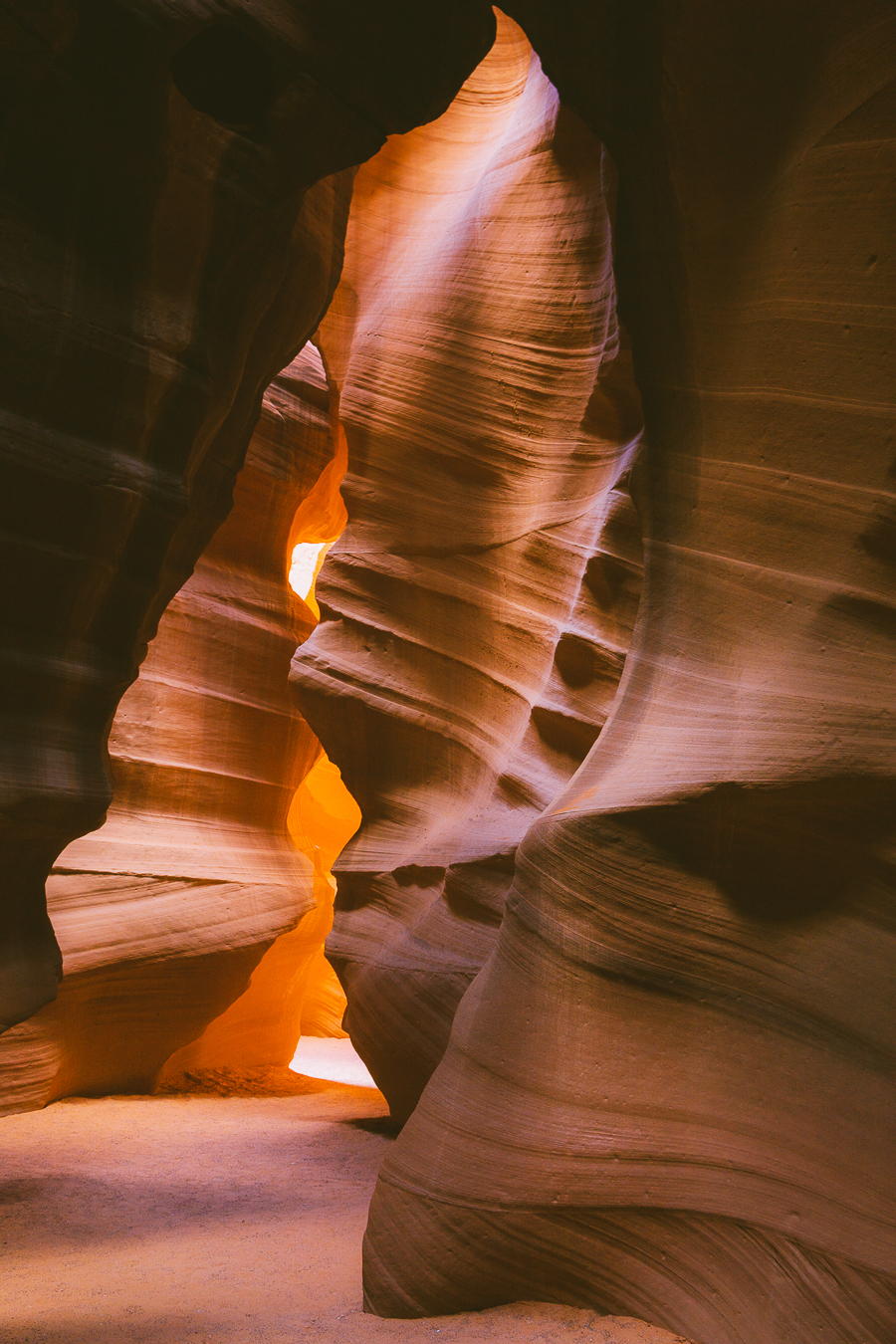
If you’re visiting Upper Antelope Canyon, there are four different tour companies operating in this busy section. Every tour starts at the various tour operators’ offices near the canyons. You’ll board a luxury 4×4 truck and be driven to the entrance of the canyon with your group.
The Navajo tour guide will explain everything about the history and origins of the canyon and show you a few great photo opportunities. If the canyon isn’t too busy, they may even help you get some excellent shots.
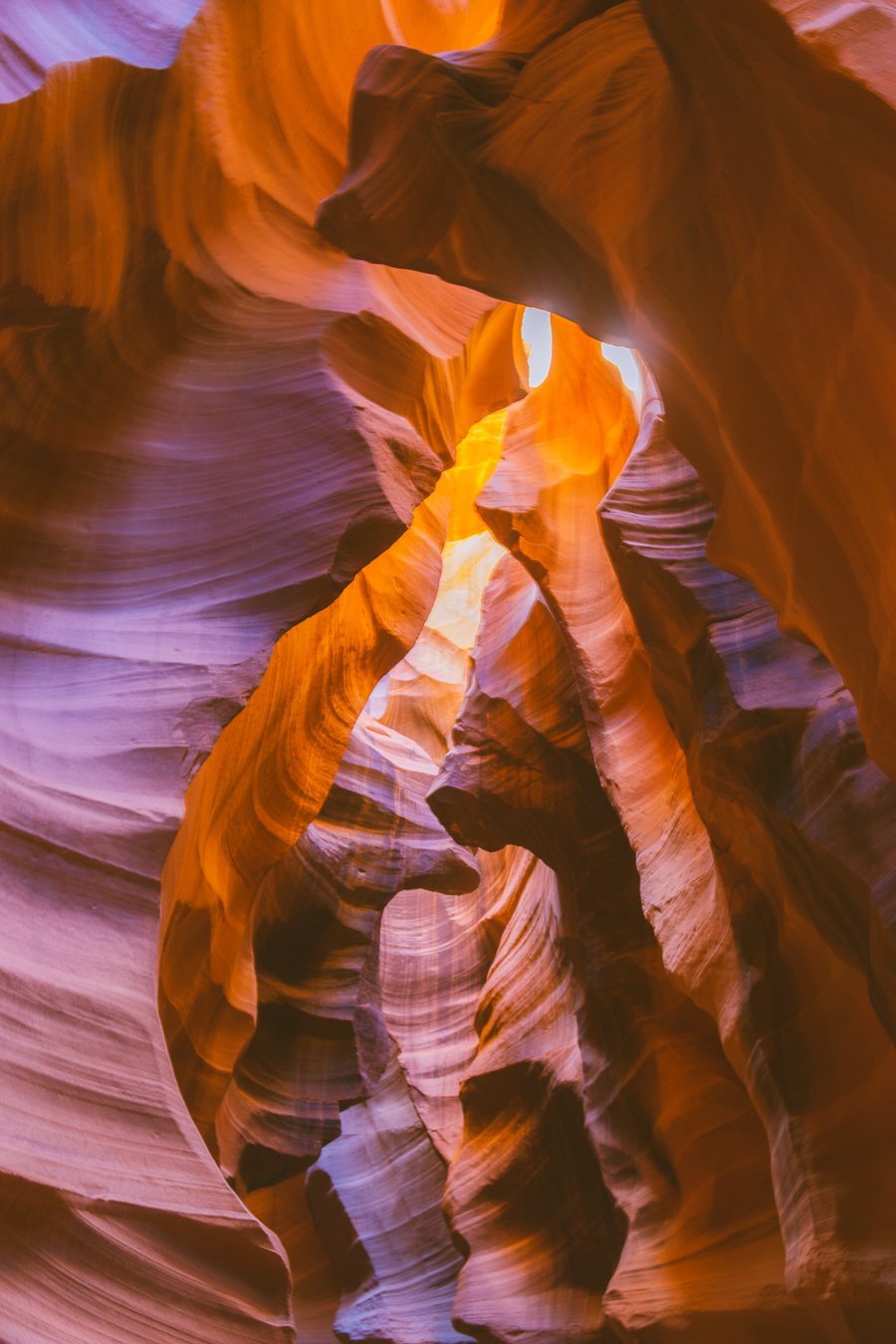
As there are multiple tour operators running tours at the same time, the crowds can be overbearing. In peak season, Upper Antelope Canyon tour groups can be as large as 40 people per group—which is not ideal if you struggle with claustrophobia.
The tours last an hour, and prices range from $30 (for children) up to $160 (for photography tours). These costs can also change depending on the time of day you choose to visit. Below is a breakdown of the average prices from each tour company.
Adventurous Antelope Canyon Tours:
- Tour Duration: 1h 20 min
- Check-in: 30 minutes prior to tour
- Everyone (ages 8+): Regular time: $102. Prime time: $112
- Navajo Park Fee: Not included
- Tour Link
Antelope Slot Canyon Tours
- Tour Duration: 1h 30 mins
- Check-in: 30 minutes prior to tour
- Children (ages 6–12): Regular time: $71.40. Prime lighting hours: $110
- Adults (ages 12+): Regular time: $78. Prime lighting hours: $120
- Navajo Park Fee: Included in price
- Tour Link
Antelope Canyon Tours:
- Tour Duration: 1h 30 min
- Check-in: 30 minutes prior to tour
- Children (ages 0–7): $72
- Adults (ages 8+): $90
- Navajo Park Fee: Included
- Tour Link
Antelope Canyon Navajo Tours
- Tour Duration: 1h 30 min
- Check-in: 30 minutes prior to tour
- All ages: Regular time: $100. Prime time: $120
- Navajo Park Fee: Included in price
- Tour Link
Photography Differences
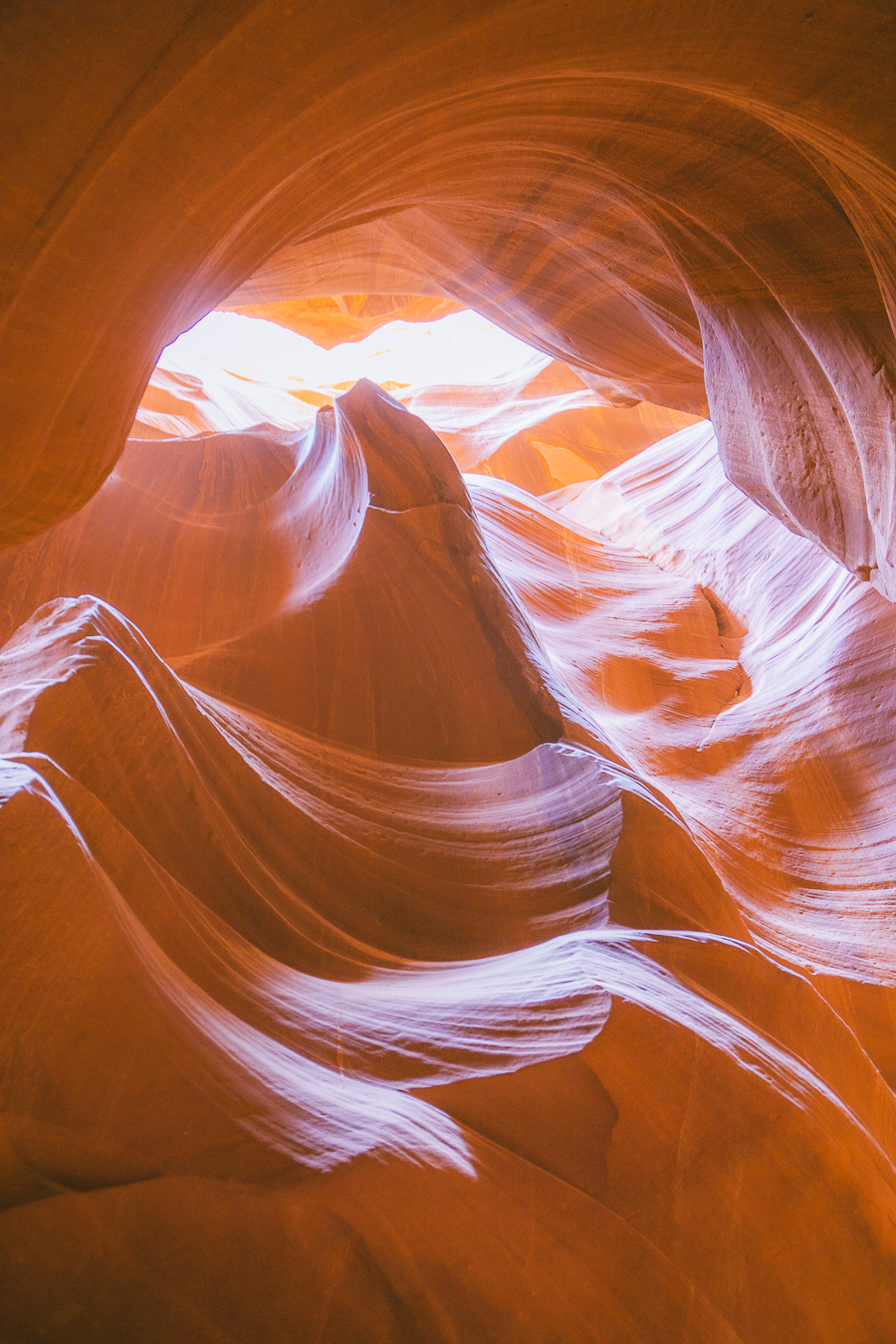
Considering the fact that a multi-million dollar photo was shot here, you don’t have to question how photogenic Upper Antelope Canyon is. With soft sand streaming down through the openings of the canyon and light beams breaking through, the upper canyon has no shortage of beauty.
But, you may encounter a few challenges while trying to capture the perfect shot. Because the canyon has become utterly popular in recent years, it can be packed during peak season.
When the crowds get too overwhelming, tour operators might rush the tour along to keep things moving. Luckily, it’s no longer an out-and-back tour, so you won’t be facing oncoming traffic.
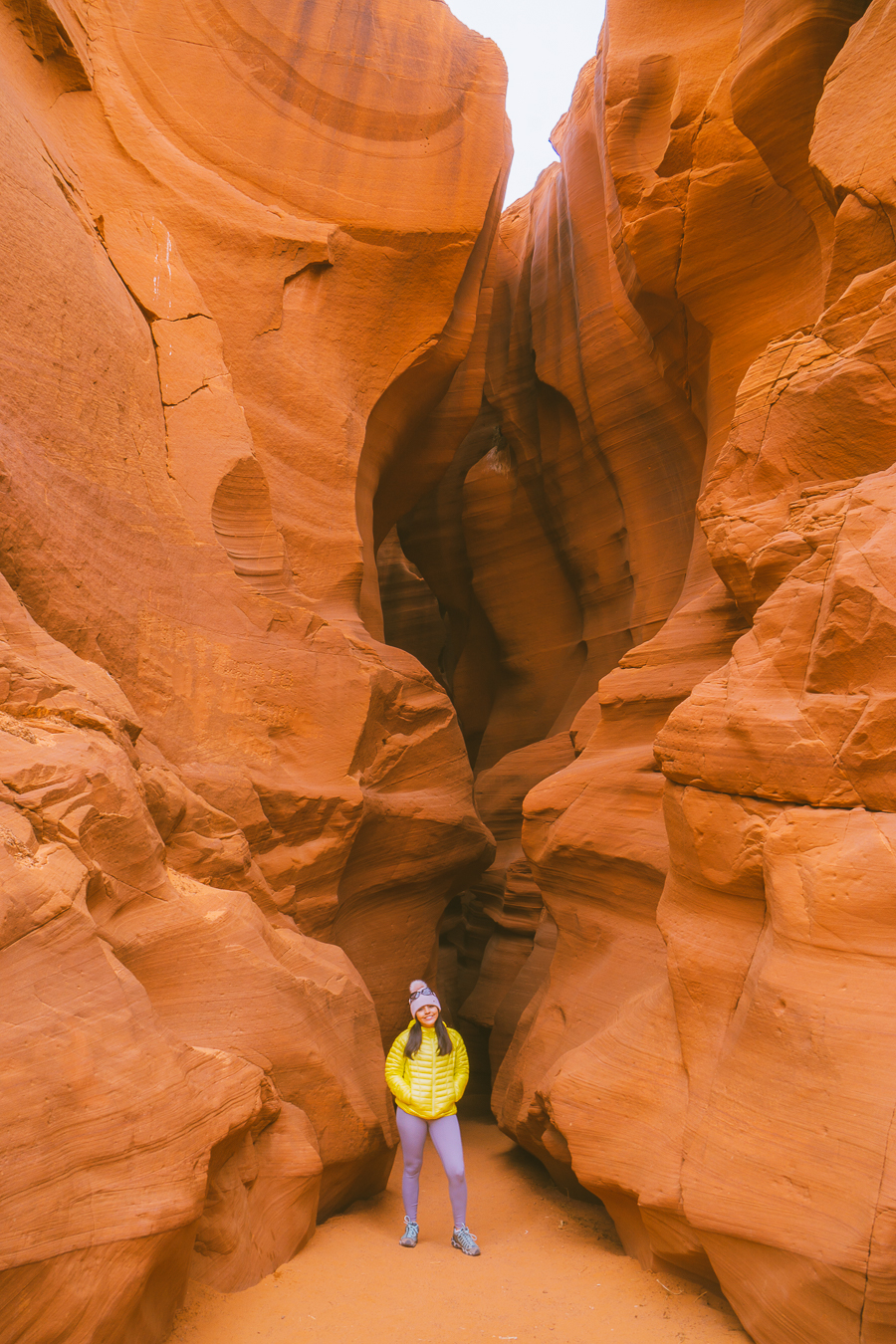
The tour is also only an hour long, excluding travel time to and from the canyon. So you won’t have as much time to get the perfect shot.
Besides that, Upper Antelope Canyon is quite dark due to its depth and the narrow openings in its “roof.” And, unless you’re on a photography tour, you’re not allowed to bring a tripod along. This means you may have to bump your ISO to obscene levels and risk a ton of grain to get a decent handheld shot. And you’re not allowed to use your flash.
So, unless you have a camera that can handle going above 1000 ISO, capturing anything other than skyward photos may be challenging. And if you do manage to frame the perfect shot (with your ISO bumped and shutter speed dangerously low), you’ll still have to hope nobody photobombs you.
But, it’s not all bad. If you visit during the off-peak season—around November to February—you may have better luck with smaller crowds.
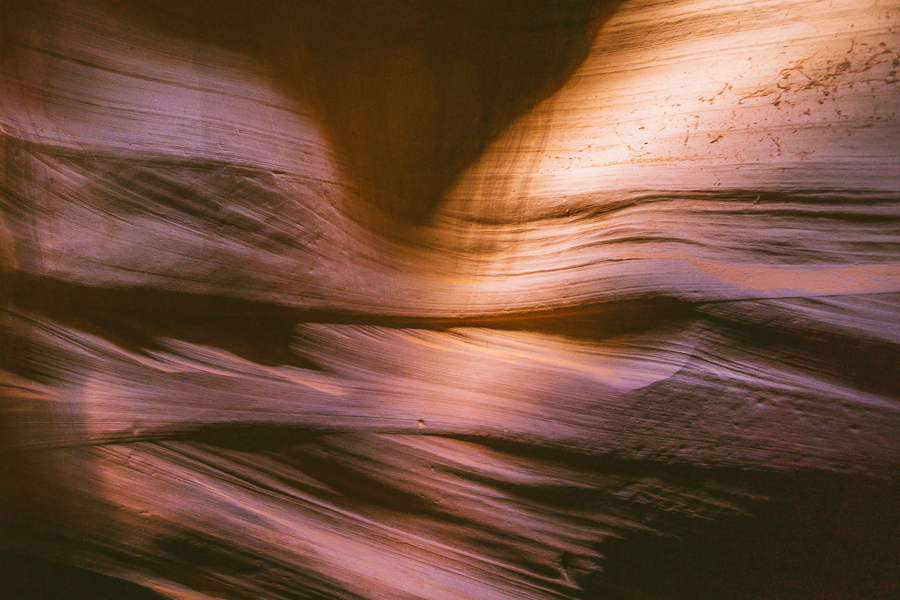
But, if you’re looking to capture those dramatic light beams, the best time to spot them is between 11 a.m. and 1:30 p.m. from June to August. Of course, you can expect to pay about $10 more during this peak period.
Important Note: You may have heard about the Antelope Canyon photography tours, but these are regrettably no longer available. Following an order by the Navajo Nation in 2019, no photography tours or commercial shoots are allowed in the canyon.
Lower Antelope Canyon
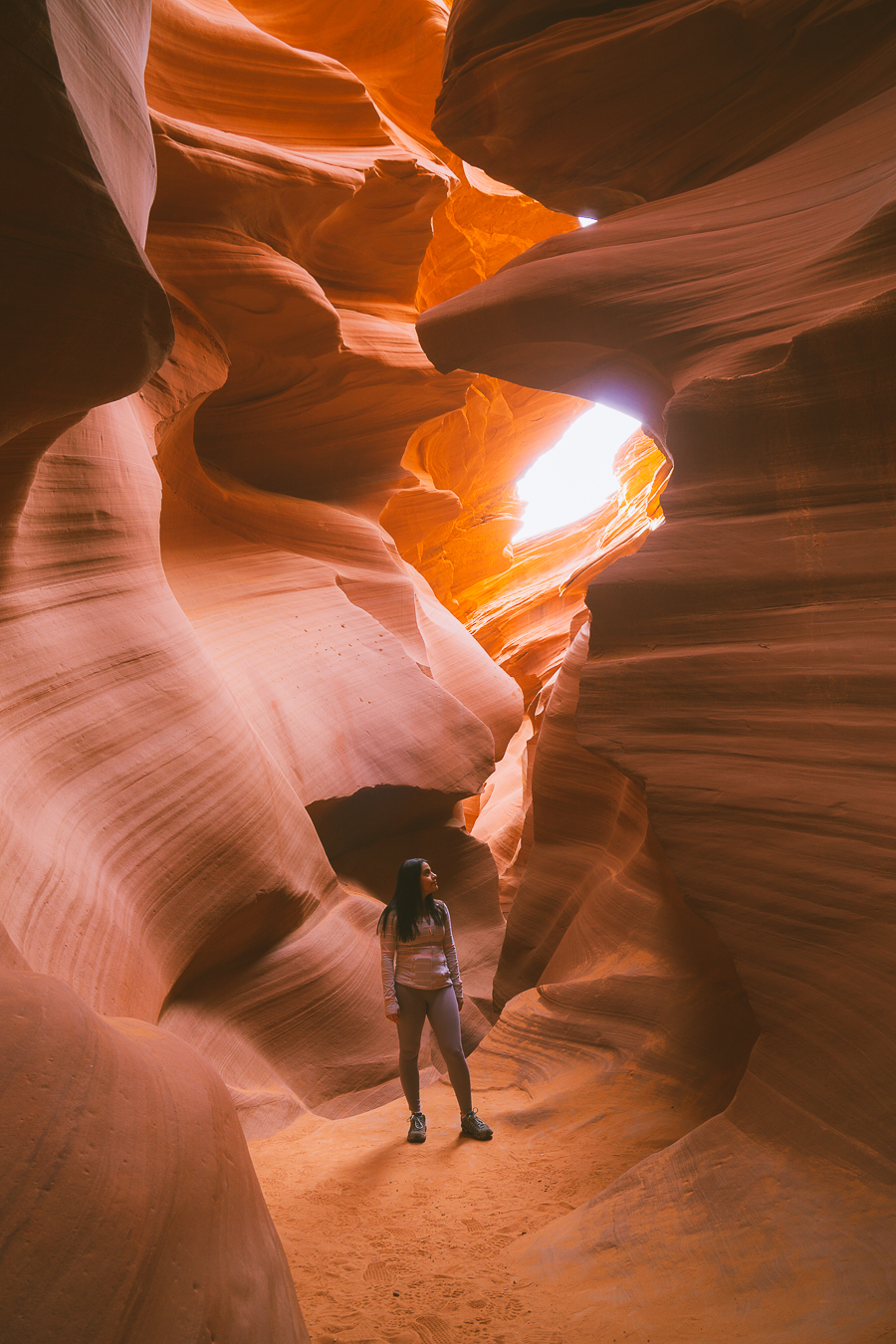
My personal favorite is Lower Antelope Canyon, and you’ll soon see why. This part of the canyon used to be much more tranquil and forgotten, but its popularity is definitely increasing.
It has all the swirling beauty of Upper Antelope Canyon, but it’s not as deep and doesn’t have those dramatic light beams. This is because Lower Antelope has a more “V-shape,” where the top is wider and the bottom is a bit narrower. So there’s no chance for the light to make a dramatic break through small gaps in the “roof.”
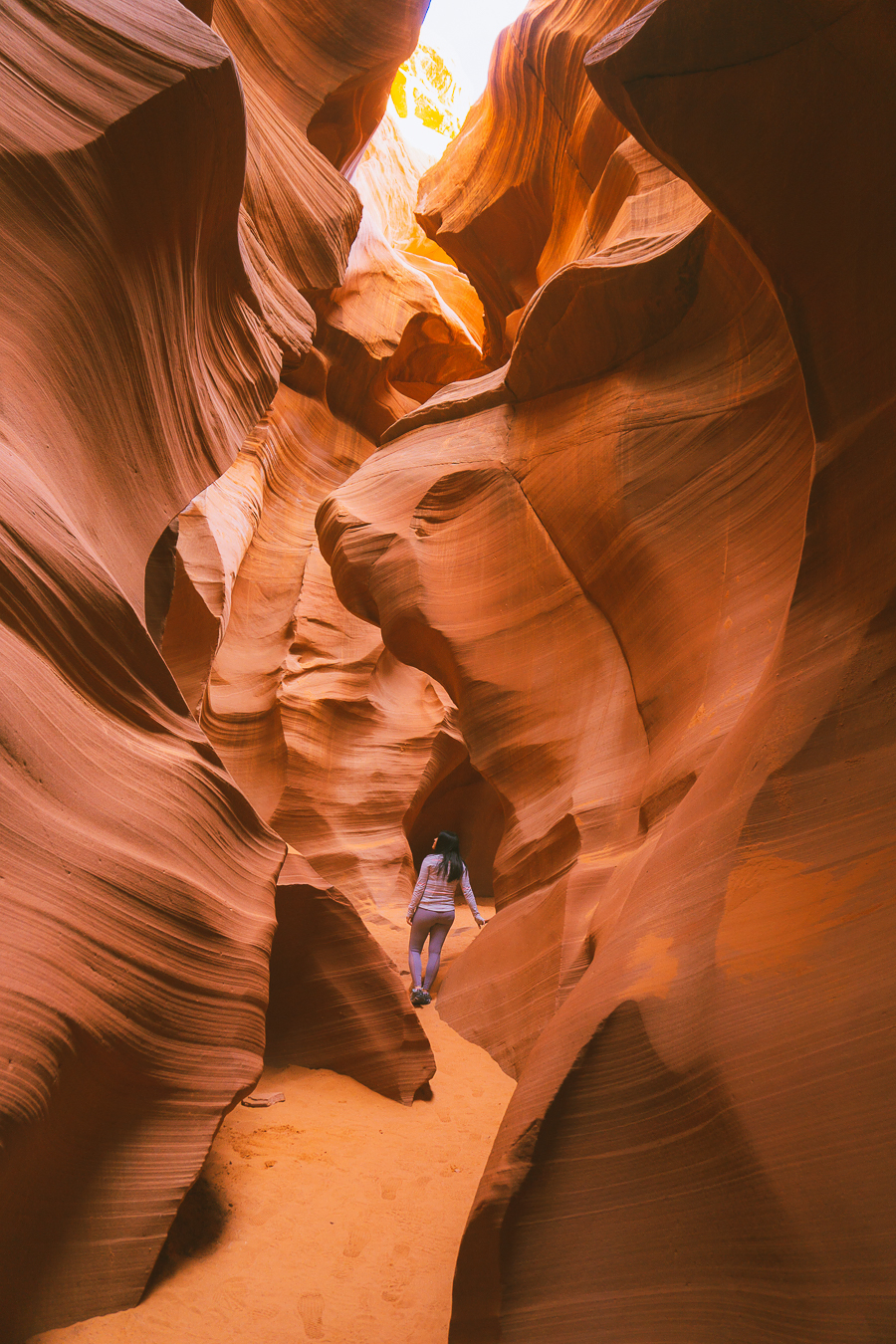
This lower section of Antelope Canyon is about seven miles from Upper Antelope and a bit longer than Upper Antelope, measuring 1,335 feet. Let’s delve into its pros and cons.
Difficulty
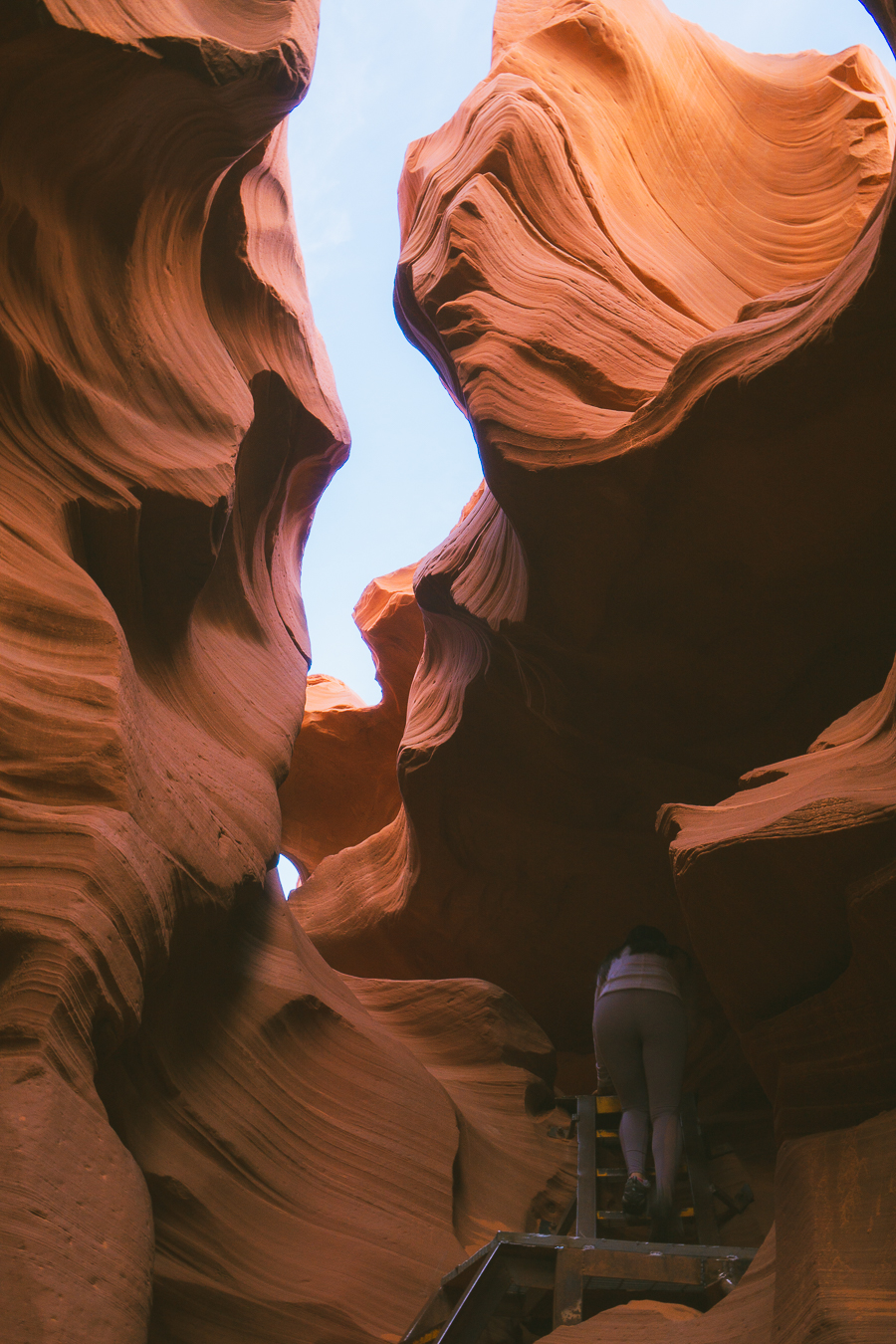
The walk through Lower Antelope Canyon is by no means challenging, but it’s definitely more adventurous than Upper Antelope. The roughly one-and-a-half-hour tour starts by going down a 75-foot staircase. And, due to its narrower base, you’ll have to climb a few ladders along the way.
You’ll likely get a quick safety briefing beforehand, but the tour should not be too challenging if you’re reasonably fit and able-bodied. This does, however, mean that the canyon is not as accessible for the elderly or those in wheelchairs.
Lower Antelope Canyon Tours and Prices
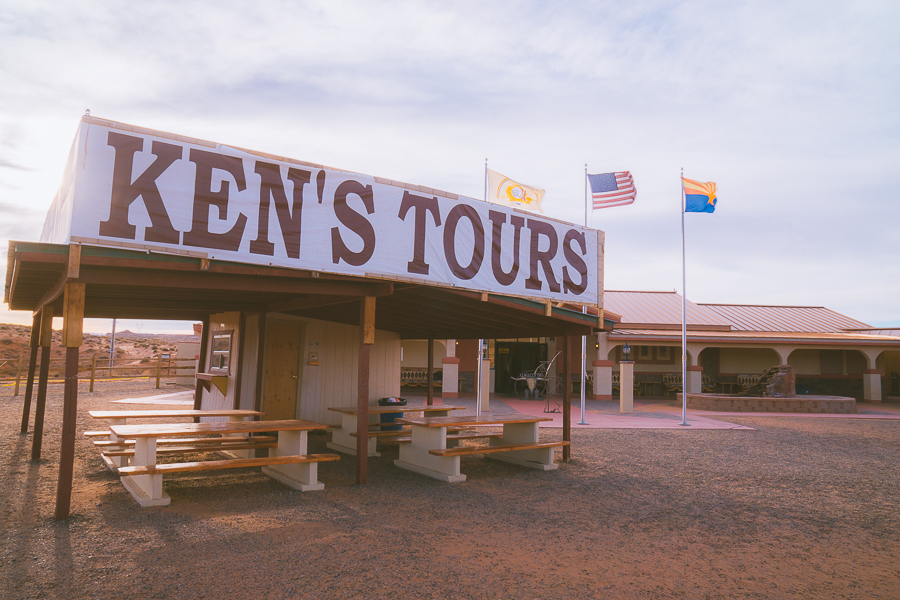
The two companies operating tours in Lower Antelope Canyon are Dixie Ellis and Ken’s Tours. These tours usually last a bit longer due to the length of Lower Antelope Canyon. They are also a more affordable alternative to Upper Antelope, with prices being almost half that charged at Upper Antelope.
Your tour will kick off with a short 10-minute walk from the tour operator’s check-in to the canyon. You’ll descend five flights of stairs at the entrance to the largest cavern.
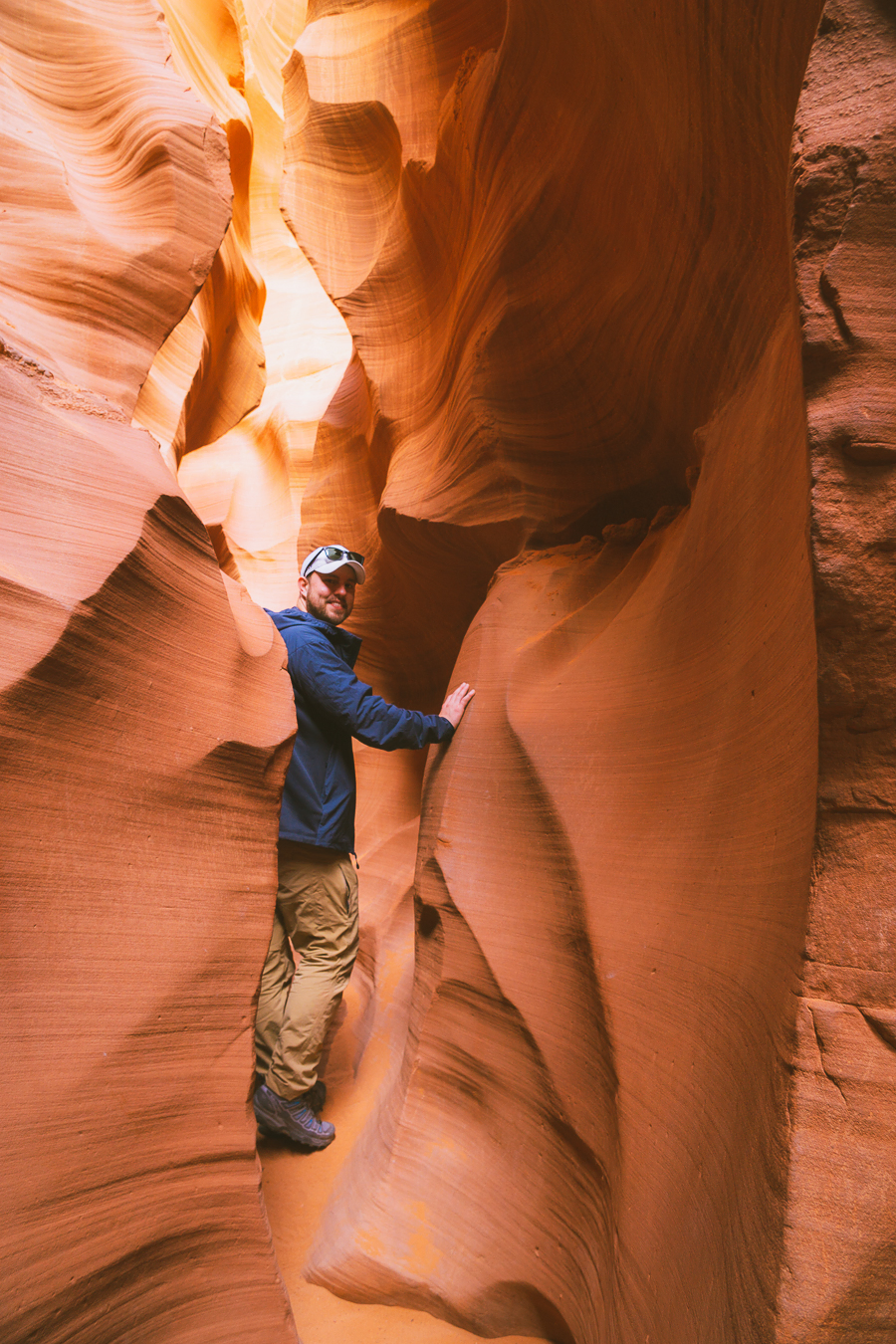
Your trip through Lower Antelope Canyon will include climbing eight different ladders to move up and out of the canyon and traverse narrow spots. It is a lot of fun and very safe, as there are handrails.
Below is a breakdown of the average prices you can expect from the Lower Antelope Canyon tour companies.
Dixie’s Lower Antelope Canyon Tours
- Tour Duration: 1h – 1h 30 min
- Check-in: 45 minutes prior to tour
- Children (4-12): $30
- Adults: (13+ years): $50
- Navajo Park Fee: Not included
- Tour Link
Ken’s Tours Lower Antelope Canyon
- Tour Duration: 45 mins – 1 hour
- Check-in: 10 minutes prior to tour
- Children (4-12 years): From $30
- Adults (13+ years): From $50
- Navajo Park Fee: Not Included
- Tour Link
Photography Differences
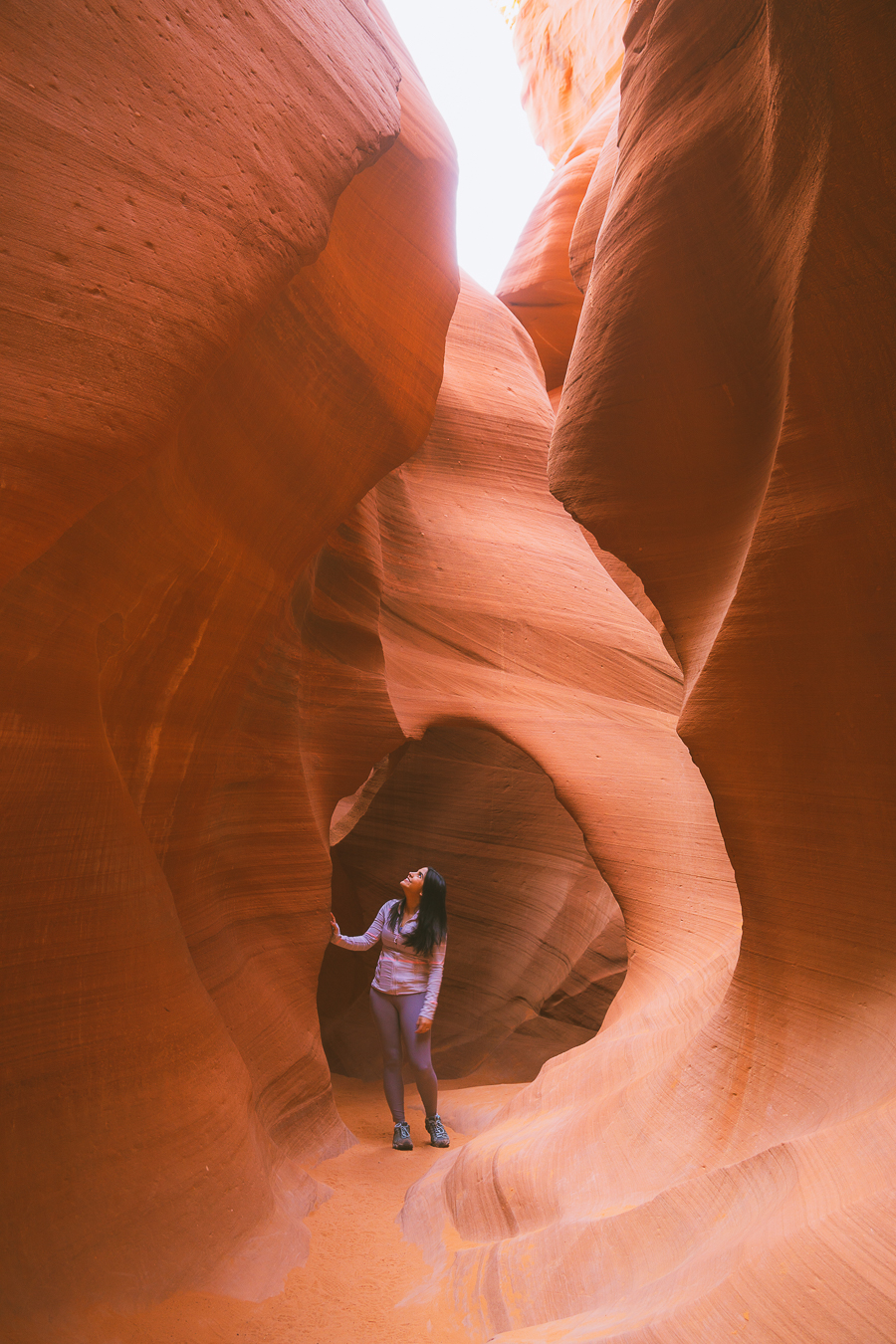
While Lower Antelope Canyon won’t provide many photo opportunities of dramatic light beams, it won’t disappoint either. The expansive roof allows much more light to stream in, which beautifully lights up the winding walls. The light is most beautiful between 10:30 a.m. and 12:30 p.m. when the sun is approaching its highest point.
With all the sunlight washing into the canyon, you won’t have to stress about maxing your ISO or risking a low shutter speed. In fact, you may even be able to get a few great shots with your phone camera.
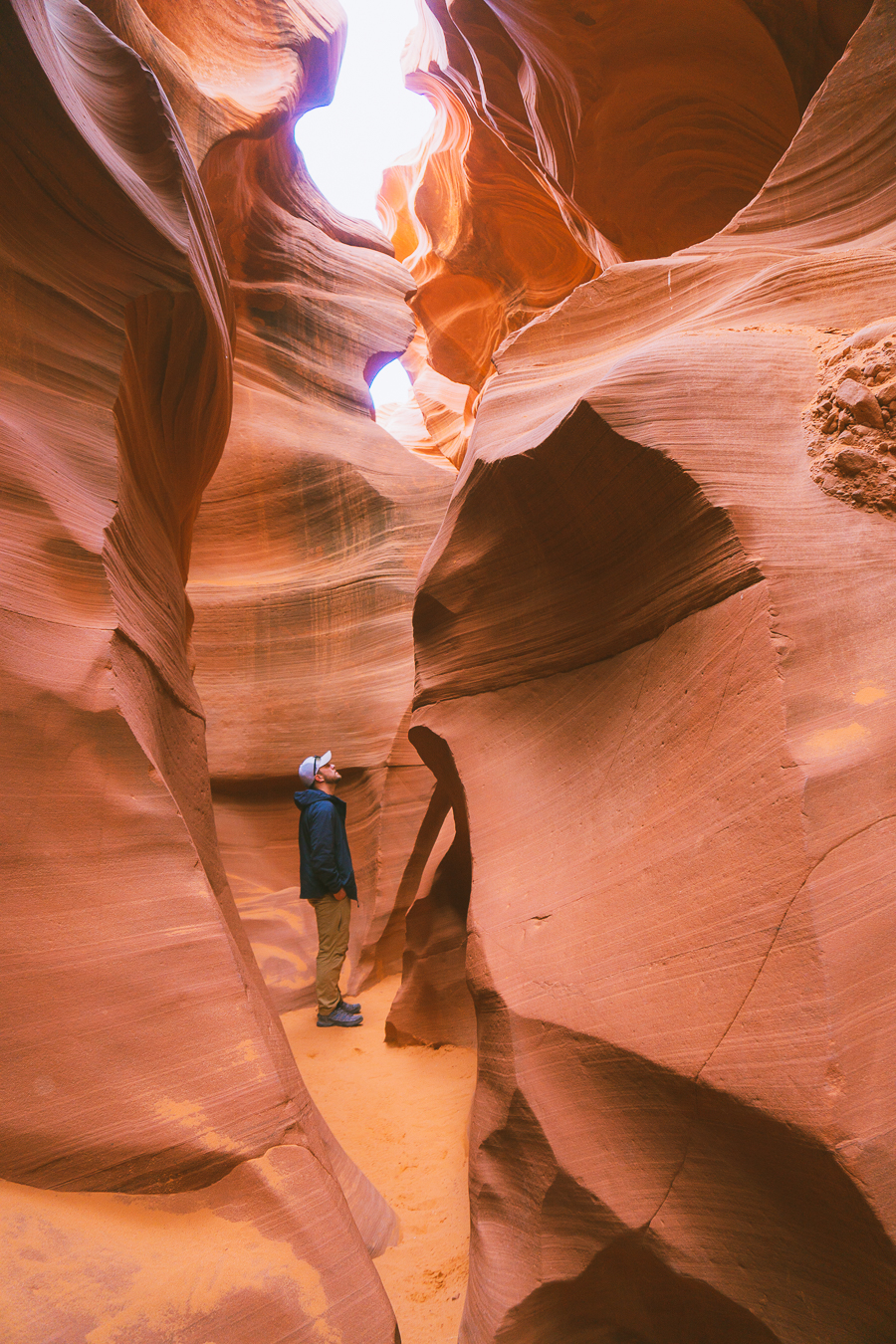
This one-way tour also doesn’t have any on-coming traffic, making it easier to get an uninterrupted shot. Due to the canyon’s length, the tours can also be a bit longer, so you’ll get a bit more time to get your money shot. And with slightly smaller crowds, you’ll be less likely to feel like you’re being herded through the slot canyon.
Tours Of The Canyons In Page Arizona
If there are no available time slots for the tours above then make sure to check out Get Your Guide. They might have available tours.
Alternative Slot Canyons Near Antelope Canyon
With Antelope Canyon’s ever-growing popularity, crowds, and prices, you may be looking for alternatives in the area. And you’re in luck because there are quite a few alternative slot canyons in Utah and Arizona worth visiting.
Antelope Canyon X
For now, Antelope Cayon X, just off Highway 98, is a bit more under the radar—but not because it lacks beauty. You can see the same curving orange walls at a fraction of the price and with much fewer crowds.
Take a tour of this canyon to learn about the centuries of erosion that created the interesting “X-shape” and capture some bright and mesmerizing images.
Secret Canyon (Horseshoe Bend Slot Canyon)
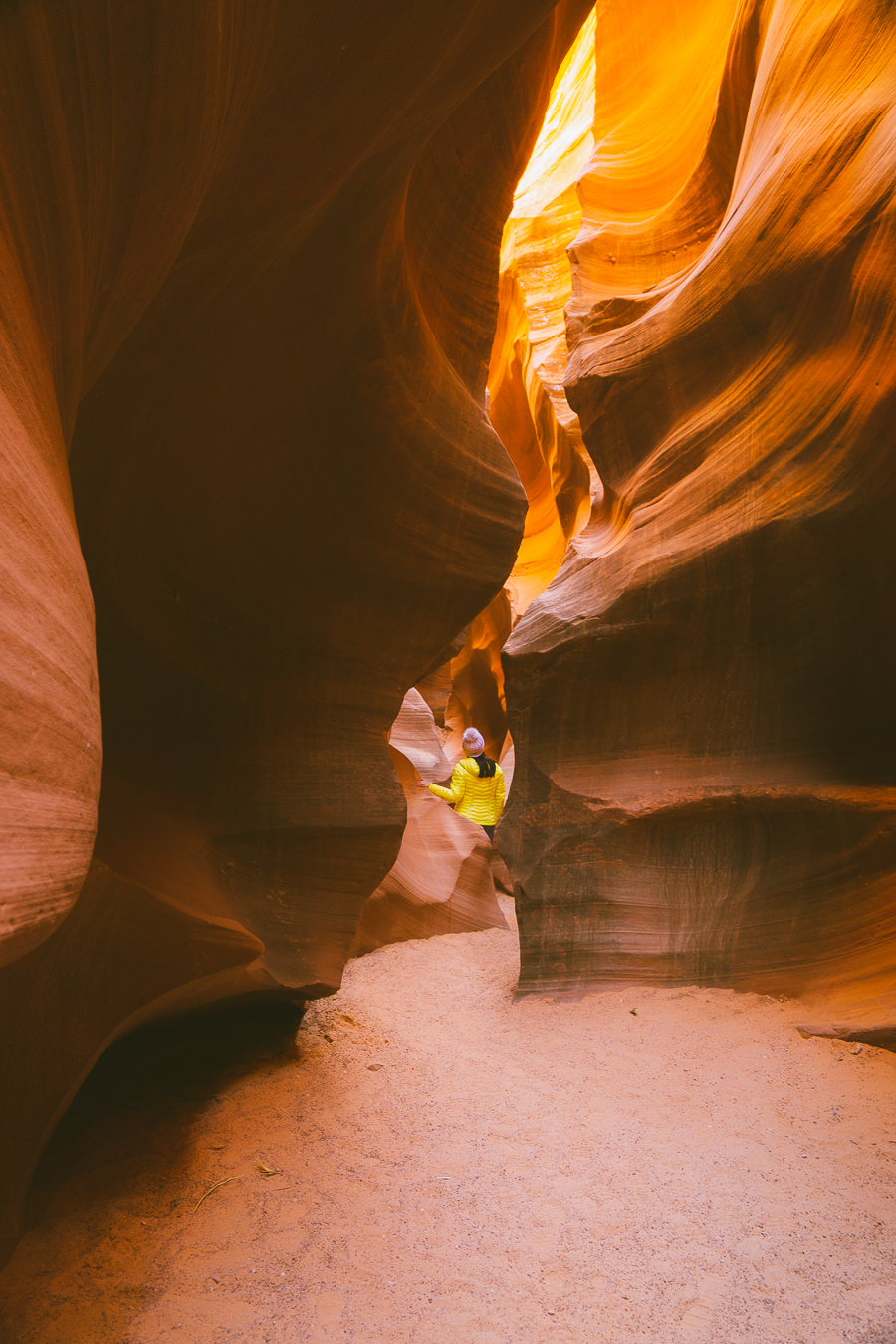
The Secret Canyon is a 30-minute drive from Antelope Canyon and can only be accessed on a guided tour with Horseshoe Bend Slot Canyon Tours. This slot canyon forms part of the great Water Holes Canyon near Lake Powell. The tour company offers small group tours of 15 people per hour, so you won’t have to worry about excessive crowds.
Your $135 ticket will cover a 3-hour tour of Secret Antelope Canyon and Horseshoe Bend overlook. So you’ll get to see two of Page’s top attractions in one go.
Owl Canyon
This much lesser-known canyon is about seven minutes from Antelope Canyon. It is an excellent option for the adventurous type, as there is a bit more hiking involved. This canyon features all the warm, golden hues and swirls you’ll see at Antelope Canyon but has almost no crowds.
This wider slot canyon stretches for about a mile and is an easy, scenic hike where you’ll encounter a few desert rock nettles scattered about. You can access Owl Canyon via the paved spur road that leads to the 33 Hole Overlook.
Rattlesnake Canyon
Don’t let the name scare you off. This beautiful canyon is a short drive from Antelope Canyon and has some equally photogenic swirls. The biggest reason to visit this canyon is to get the perfect photo without interruptions from larger crowds.
It is 10 minutes from Antelope Canyon and can be accessed on a combination tour of Upper Antelope and Owl Canyon. This tour is run by Adventurous Antelope Canyon Tours, lasts around 3 hours, and costs upwards of $200. It may be pricey, but it’s a great option if you’re seeking some photo ops.
Tips for Visiting Upper and Lower Antelope Canyon
There are a few things to keep in mind while planning your trip to Antelope Canyon so you can arrive prepared.
- The weather conditions in the desert can reach extremes, and temperatures in the canyons are usually around 10 degrees colder. So, always check the weather ahead of time to ensure you arrive with the appropriate clothing. Layering is a good option.
- All tours expect you to wear closed-toed shoes. This is an excellent opportunity to put your best hiking shoes to good use.
- Most tour companies only allow one backpack to be brought into the canyon per family or acquainted group. So only carry the essentials for your tour.
- Large camera gear like tripods, selfie sticks, drones, etc., are not allowed.
- Due to safety concerns, pets or service pets are not allowed into the canyon.
- Certain tour groups don’t allow infants or toddlers on the tour. If you have a little one coming along, be sure to double-check that the company allows small children to join.
- These tours are not recommended for pregnant people due to safety concerns.
- Unfortunately, neither of the canyons is wheelchair accessible.
- Due to the canyons’ popularity, it is safer to book your tour well ahead of time—especially if you’re planning to visit between March and October.
Lower vs. Upper Antelope Canyon: Which Will You Visit?
The American southwest has no shortage of sights that’ll leave you feeling like you’re on another planet. From the dizzying Grand Canyon views to the glowing hoodoos in Bryce Canyon National Park, beauty abounds in this striking desert landscape.
And Antelope Canyon follows suit. Its swirling orange walls are ultra-unique and absolutely beautiful to photograph. Whether you opt for Upper or Lower Antelope Canyon—or one of the lesser known slot canyons nearby—you’re sure to leave with great memories and photographs.
So be sure to read up on my hiking photography tips and tricks and get ready to visit one of the best highlights of any Arizona road trip itinerary.

More Posts About Arizona
new on the shop
The Ultimate Camping Trip Planner!
Our camping trip planner helps you stay organized and plan all aspects of your adventure so that you can conquer new territories with ease.
